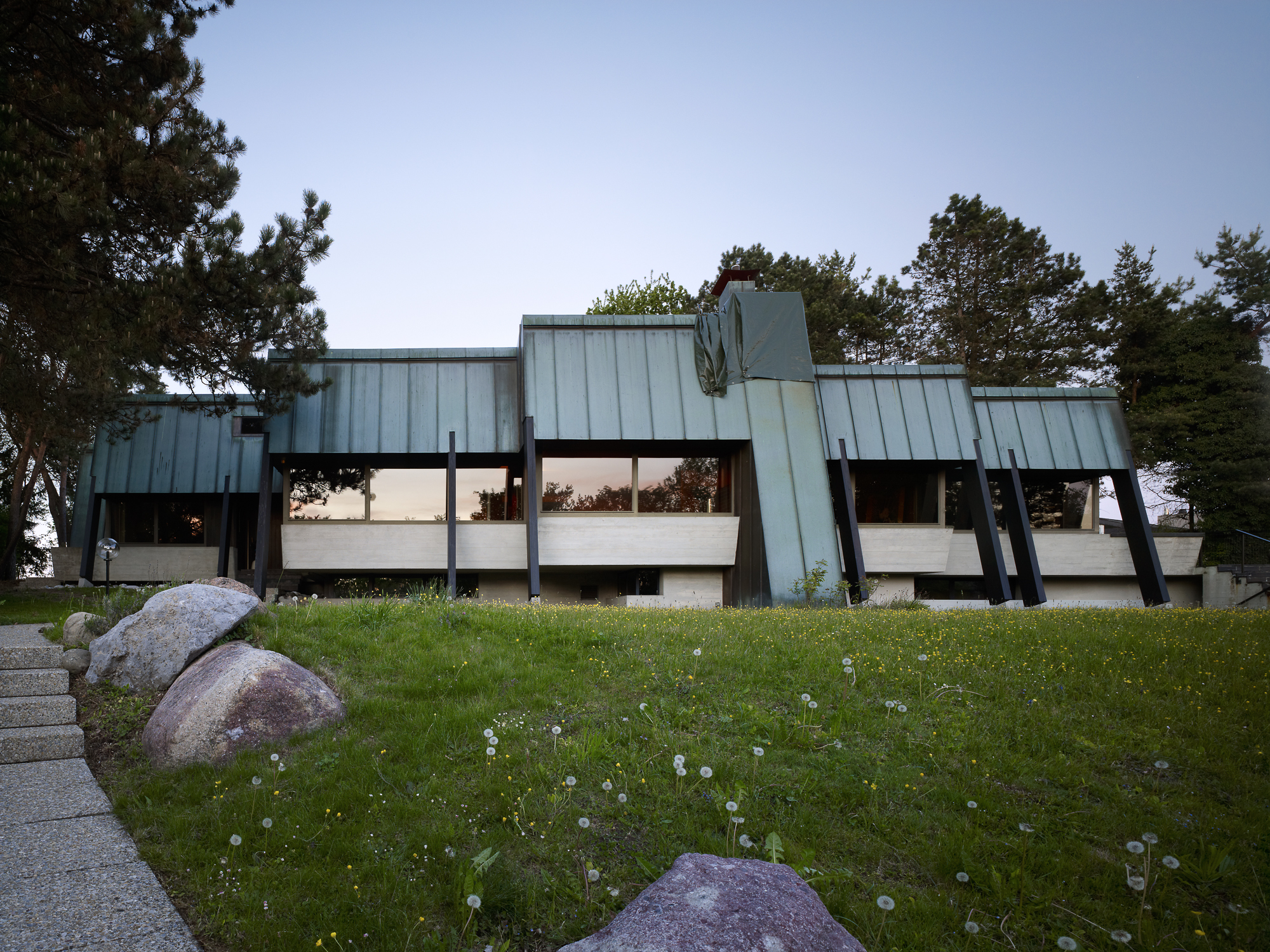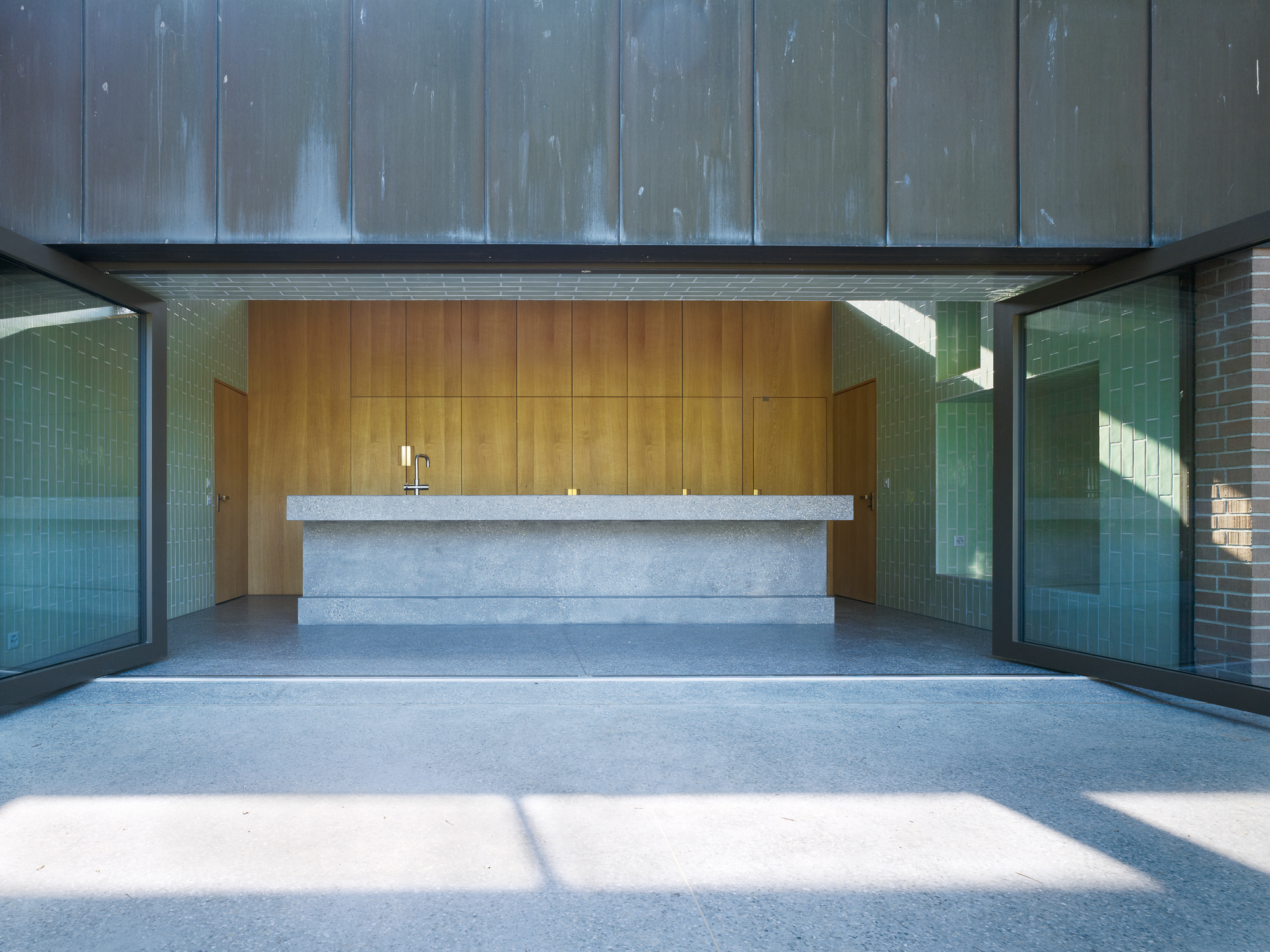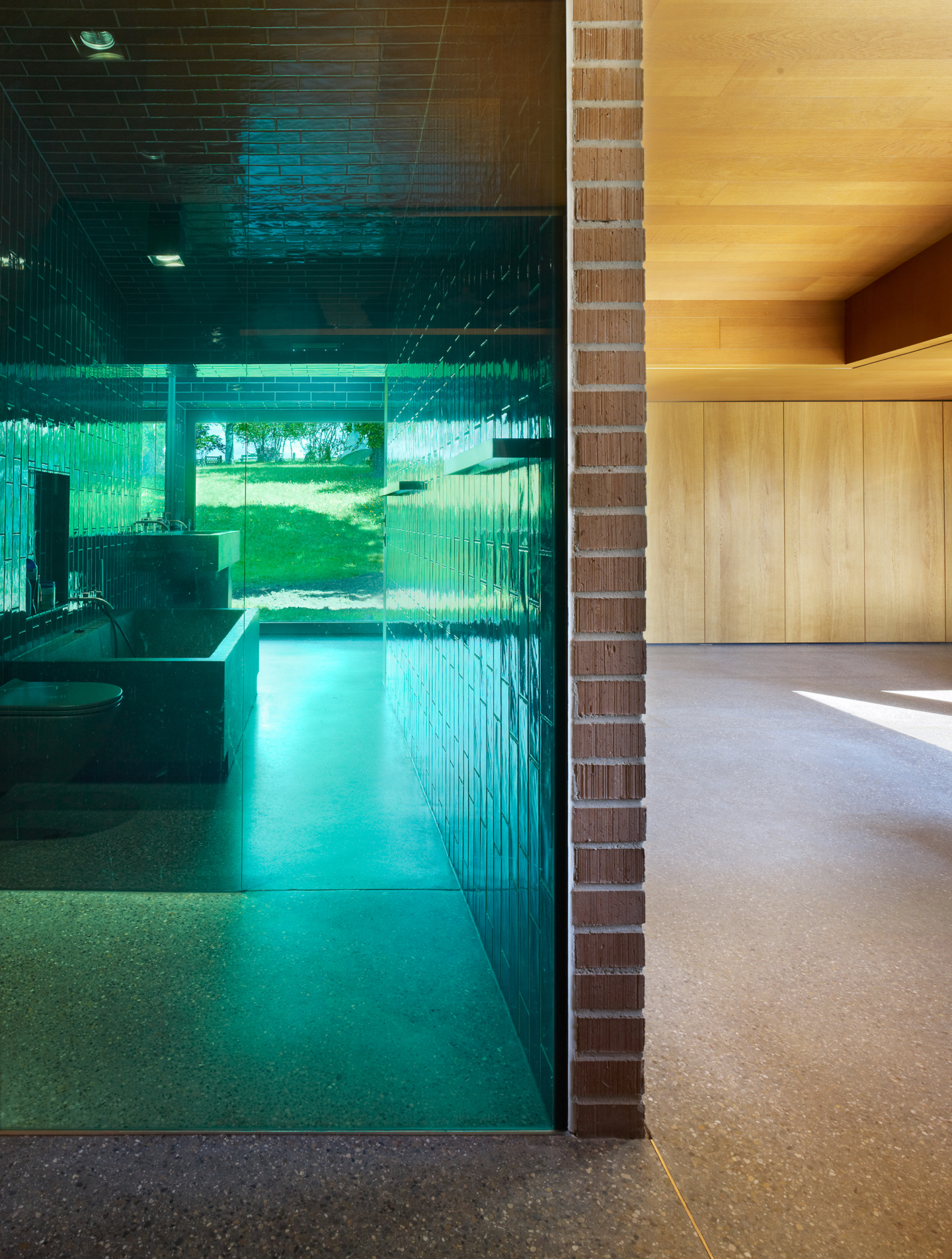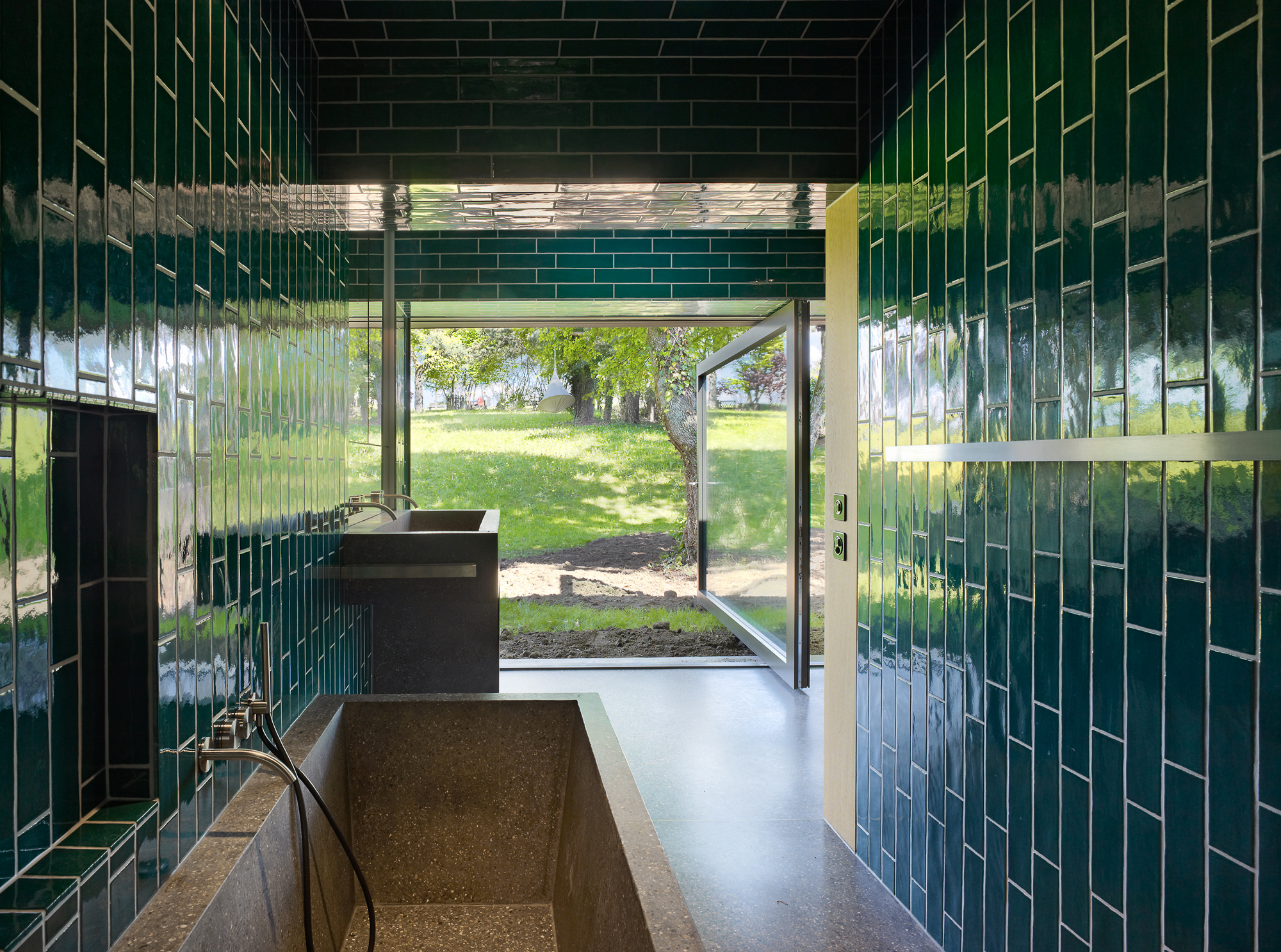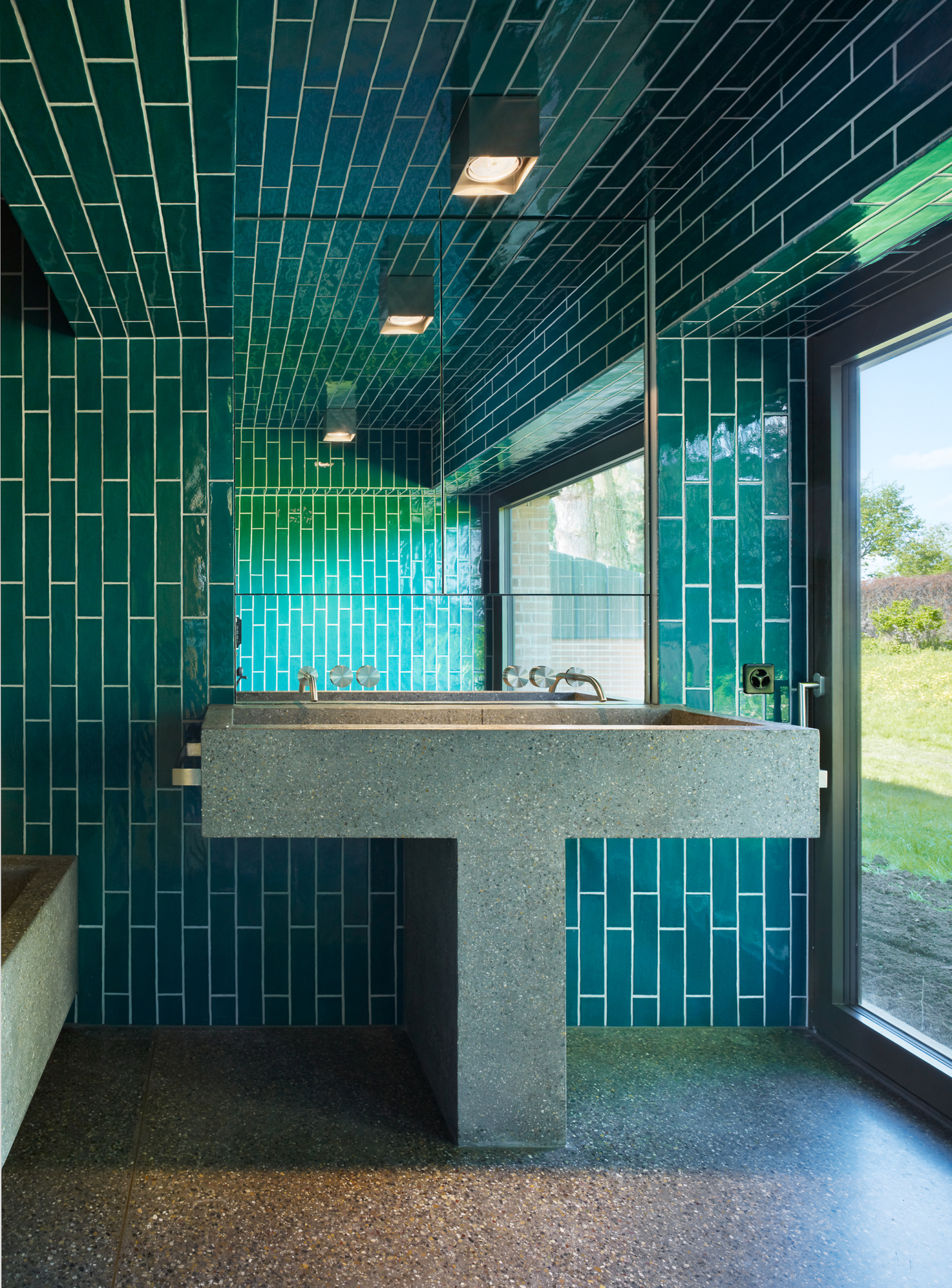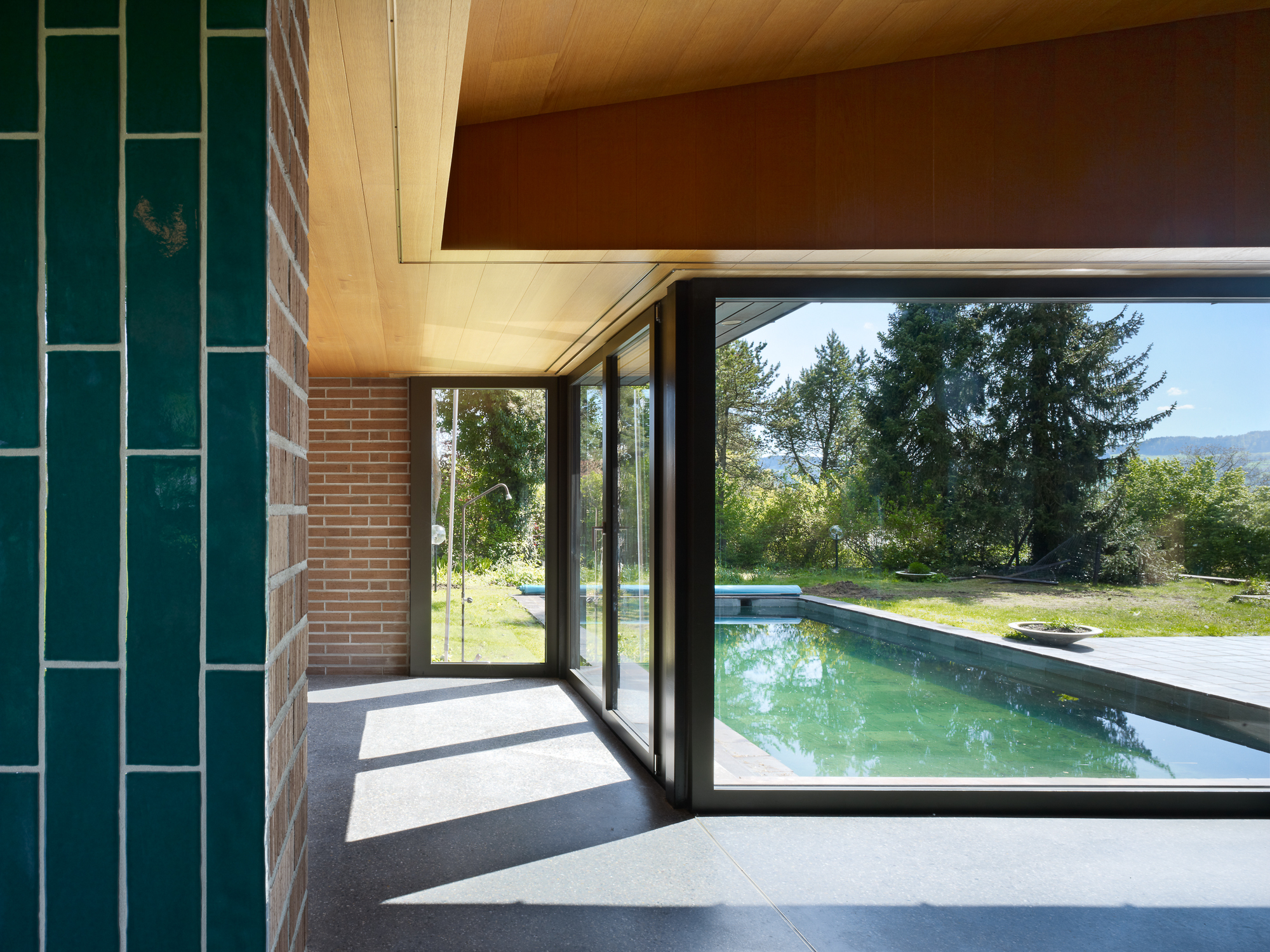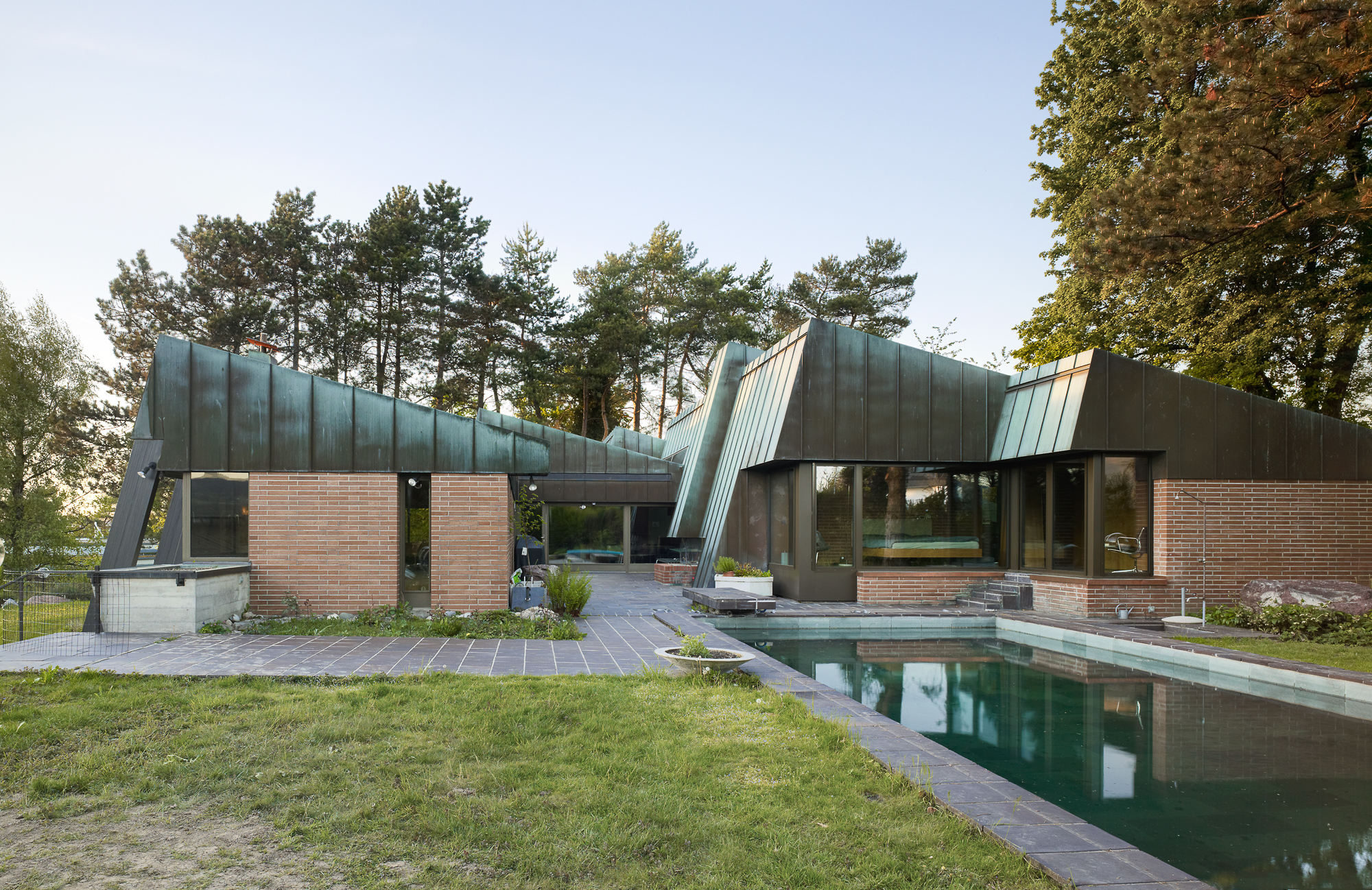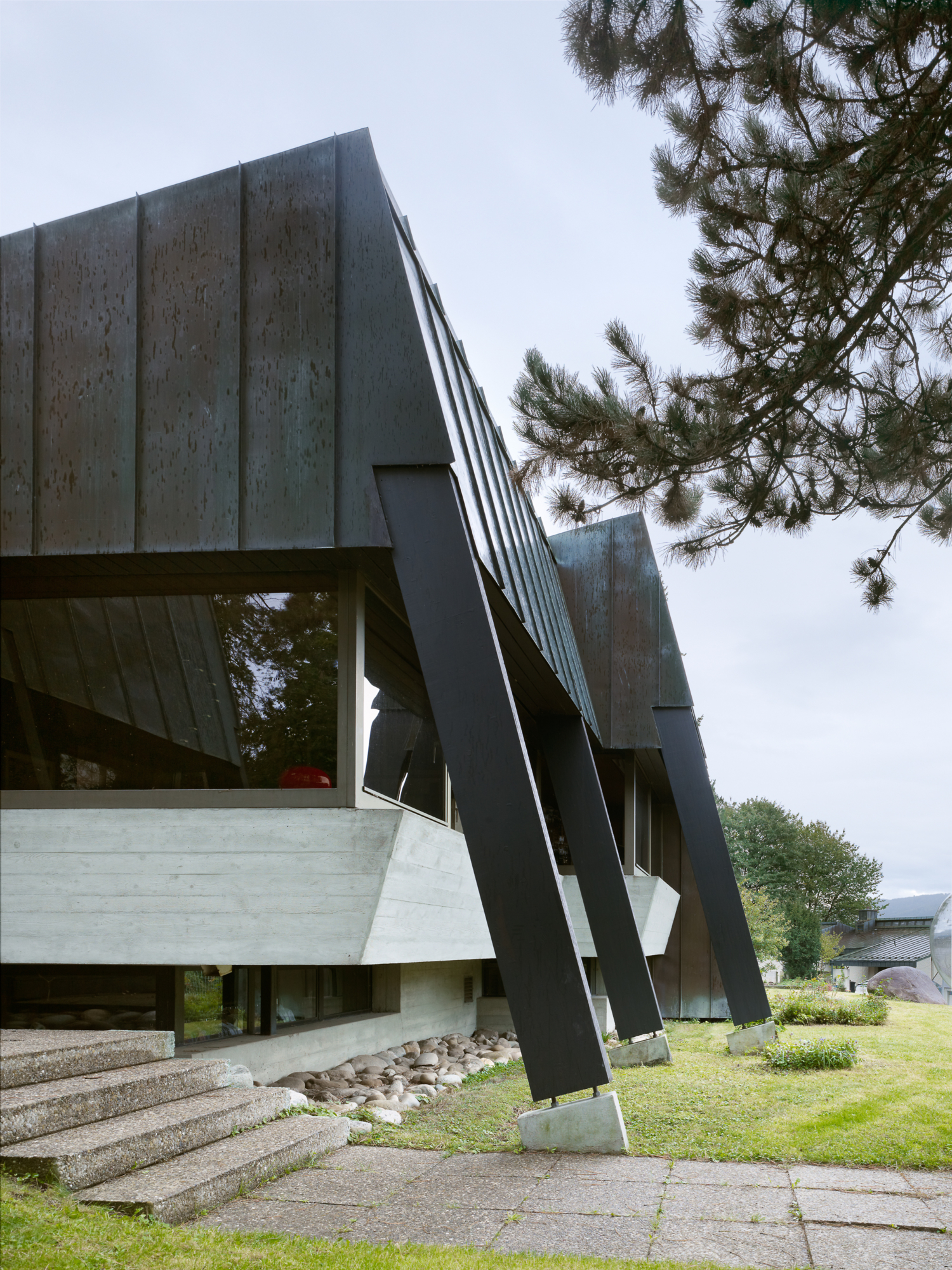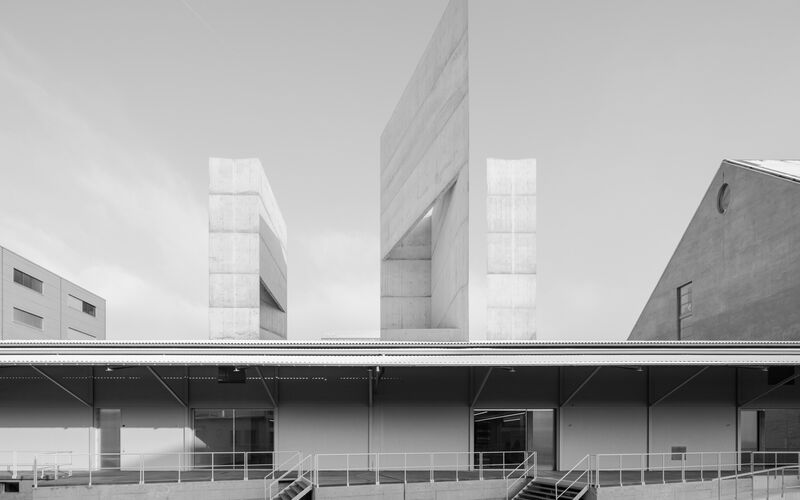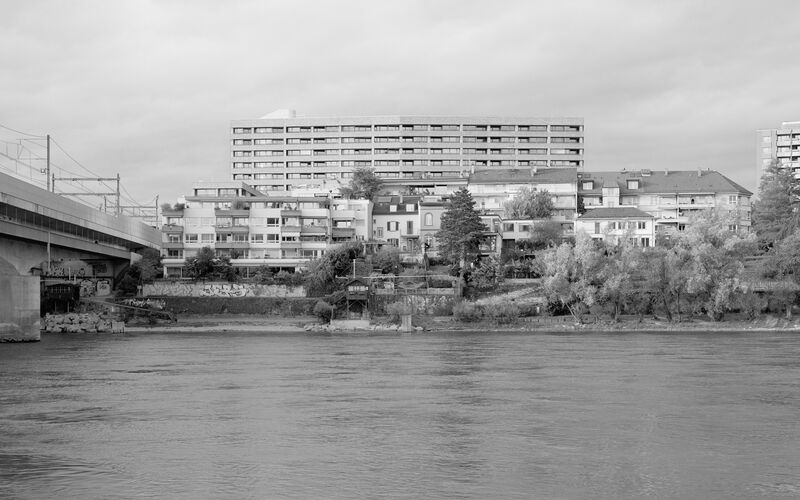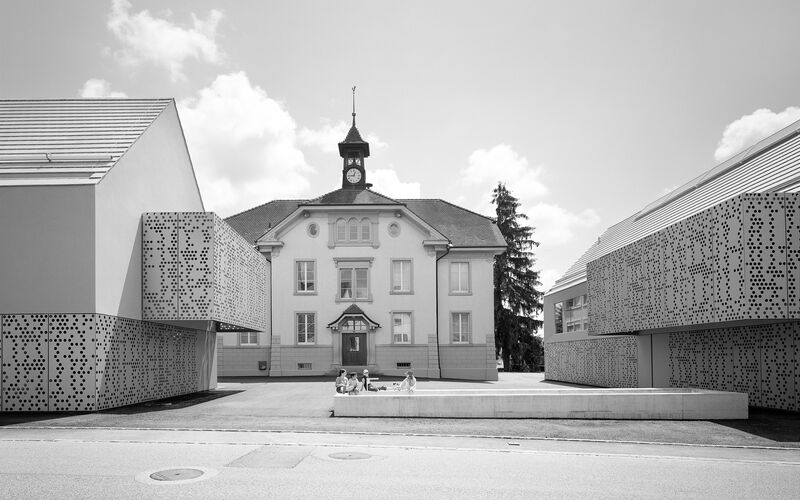Not far from a lake, a house by Justus Dahinden dating back to the late 1960s stands alone in the landscape on a large plot of land on a slight hilltop with a view. The formally complex house is rich in spatial impressions and lighting situations, connected by several solid copper single-pitch roofs. A wooden construction resting on a fair-faced concrete base and masoned brick walls dominates the interior spatial impression. The client wished to have more openness and light in the partially significantly segmented room structure: the kitchen and bathroom were to be converted and the living area modernised.
In order to retain the character of the villa, the interventions are visible and distinct, but carried out in line with the spirit of Dahinden. The pronounced materiality as well as the concept of considering a house in terms of its construction served for inspiration. The element of joining together is vital with regard to the construction: bricks form the walls, clinker clads the floors and the metal roof is composed of individual sheets. This element was continued with the ceramic tiles fully covering the walls of the new kitchen and bathroom. The originally secondarily designed area facing the garden – containing the bedrooms and bathrooms as well as the kitchen – is now also generously opened up to the landscape by means of continuous wall-high glazing. This was formerly characterised by small windows sitting in the heavy brick wall as cut-outs. Nature, also offering a lot of green space on this side away from the street, was secondary. It is now given a new presence.
The new open kitchen design required the combination of two rooms and the addition of large window wings that can be opened fully to the exterior. A sense of spaciousness is created by the hard concrete floor, flowing from the interior to the new terrace. The joining-together theme in the kitchen and bathroom makes reference to the brick walls: the ceramic tiles are laid in the same, slightly overlapping, interlocking pattern. Yet while the bricks are ordered horizontally following a load-carrying logic, the ceramic tiles face the other way. Not fulfilling a load-bearing function, but rather an aesthetic decorative one, they run in a vertical direction. Their colouration is new: with a very light green in the kitchen and a very dark turquoise in the bathroom. These shades harmonise with the concrete of the floor, extending upwards to form the counter in the kitchen, and the bathtub and basins in the bathroom. The oak of the kitchen fronts reflects the materiality of the original built-in elements. In the western part, containing the living area, a black-dyed finely ground hard concrete floor endows the formally and materially lively internal spatial sculpture with calmness. Brilliant, yet not glossy, the darkness appears deep. It creates a counterpole to the dominant shed-like wooden roof and to the walls partly covered with wood or bricks.
- Location Greifensee, Switzerland
- Client Private
- Planning 2015
- Realization 2016
- Architecture Buchner Bründler Architekten
- Partners Daniel Buchner, Andreas Bründler
- Associate Nick Waldmeier
- Project lead Bianca Kummer
- Staff realization Omri Levy, Aurelia Müggler, Jakob Rabe Petersen, Carlos Unten Kanashiro
- Photography Ruedi Walti
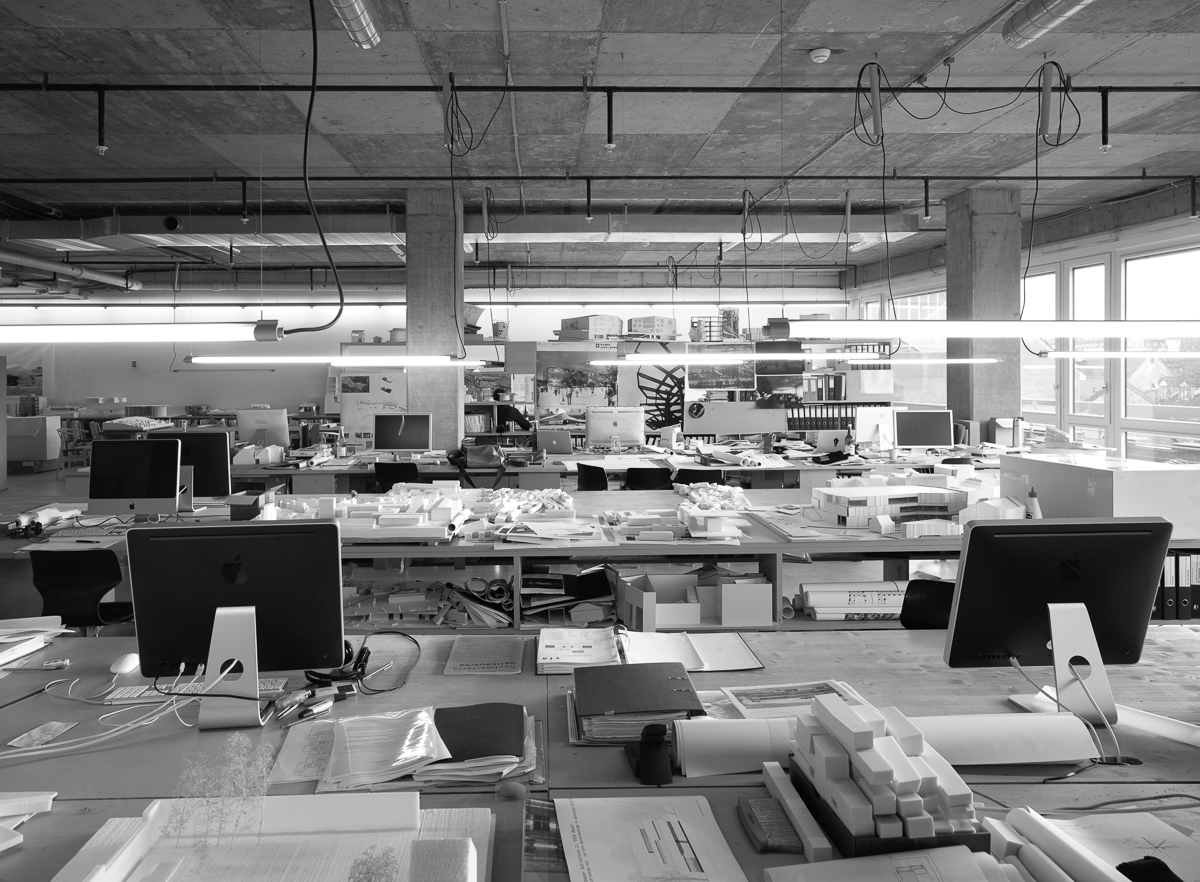

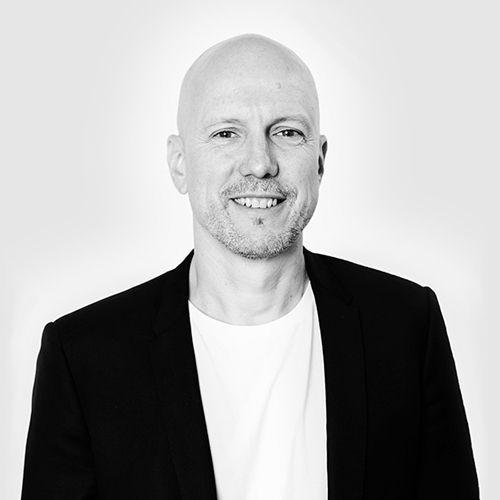
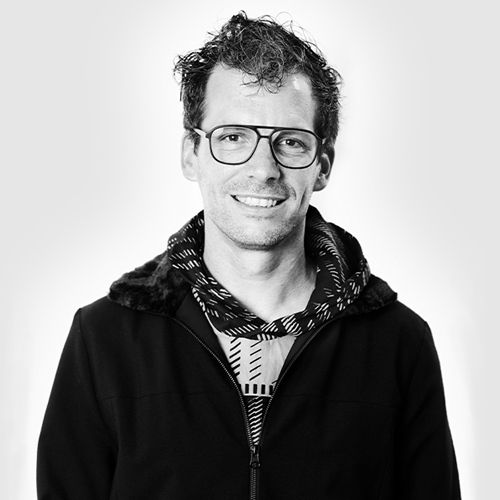

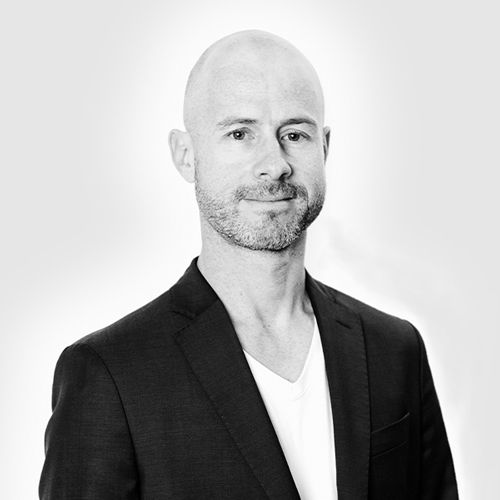

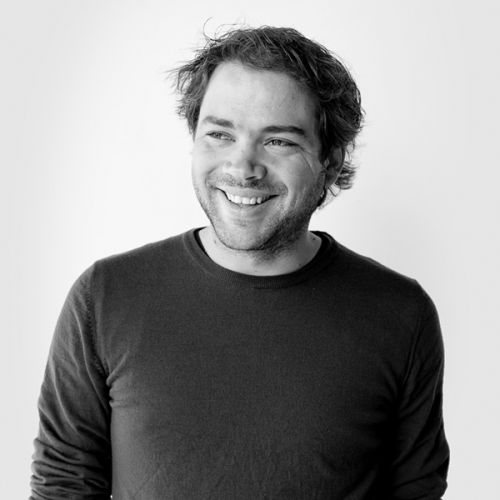

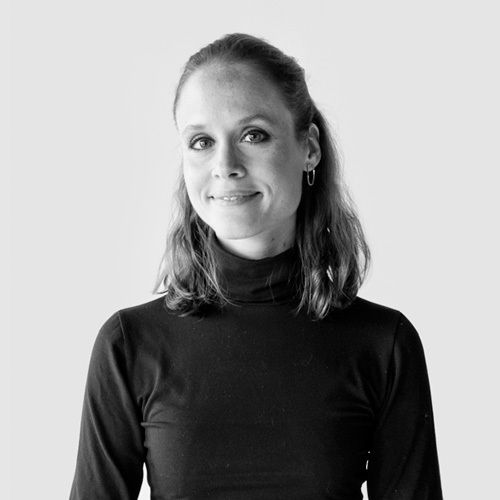
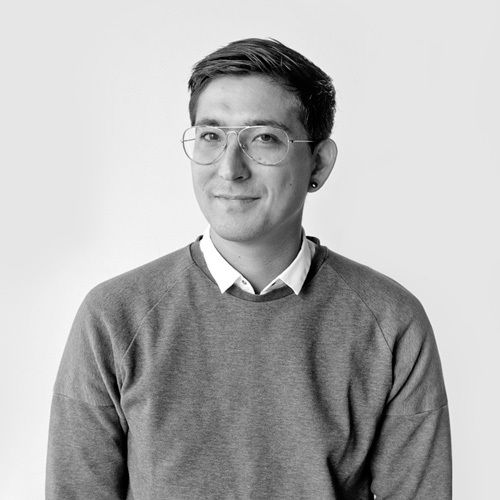
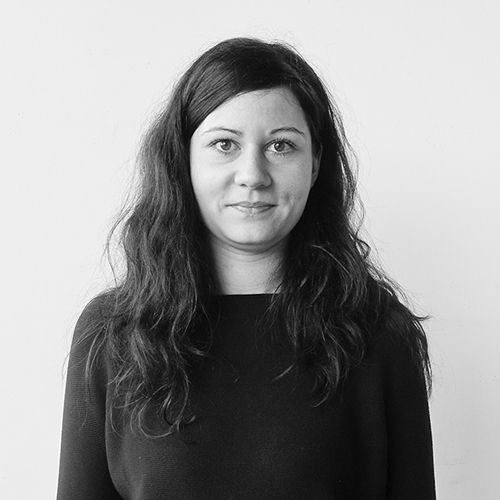
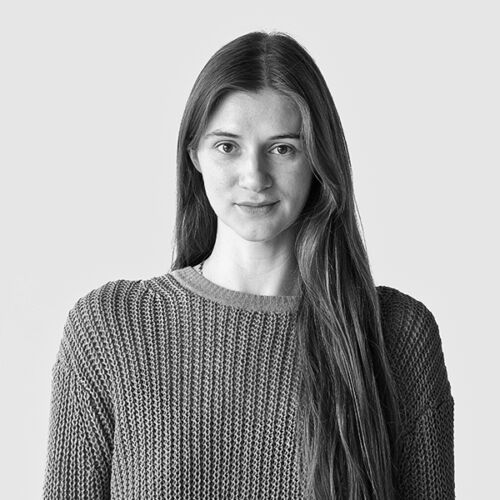
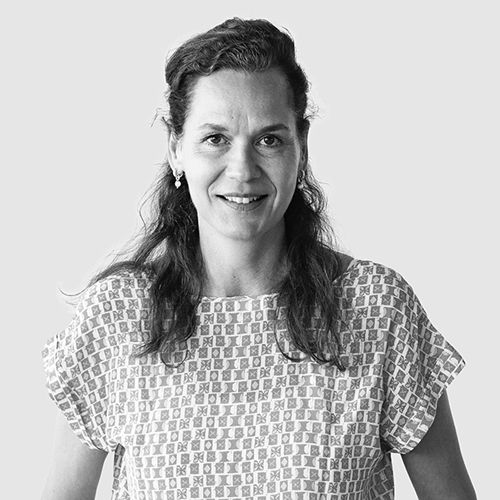
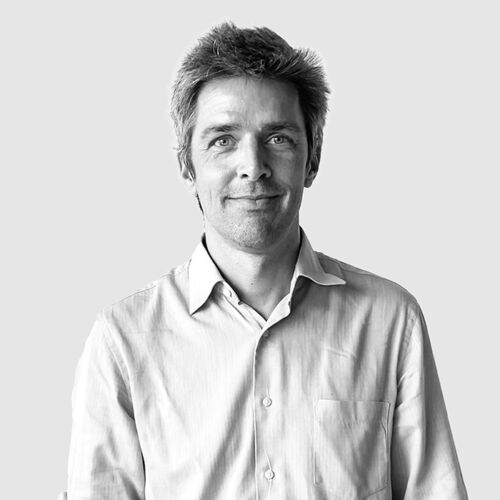
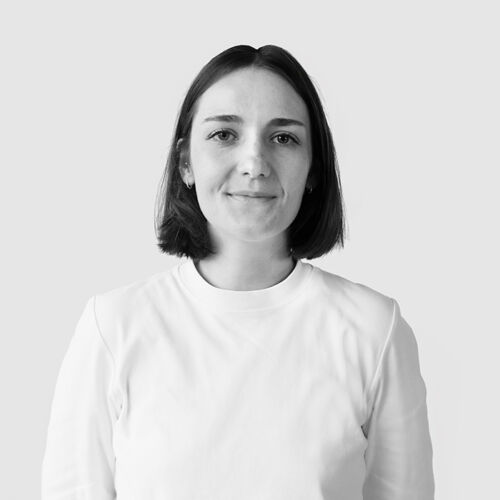
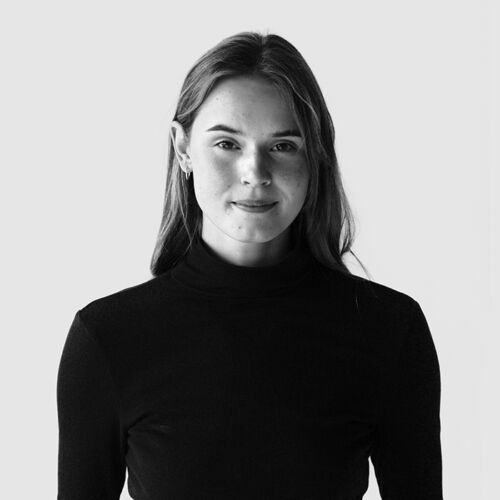
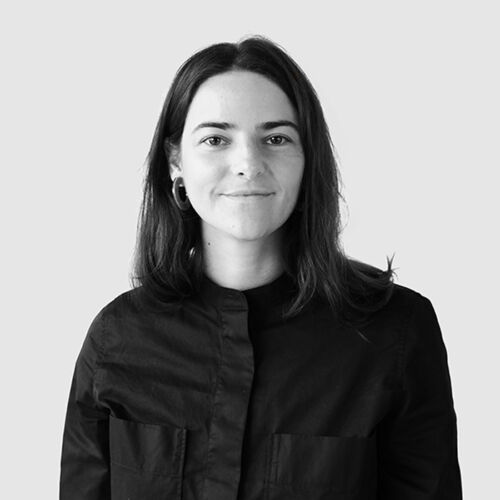
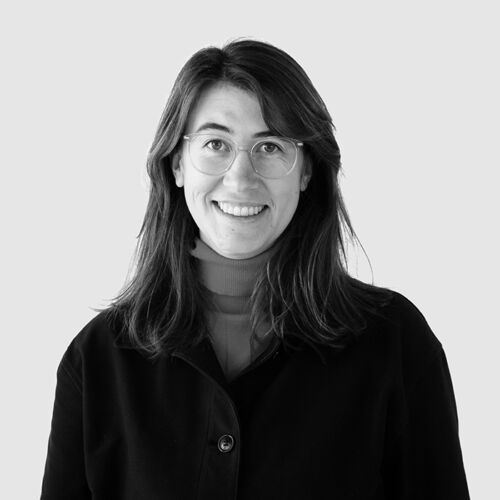

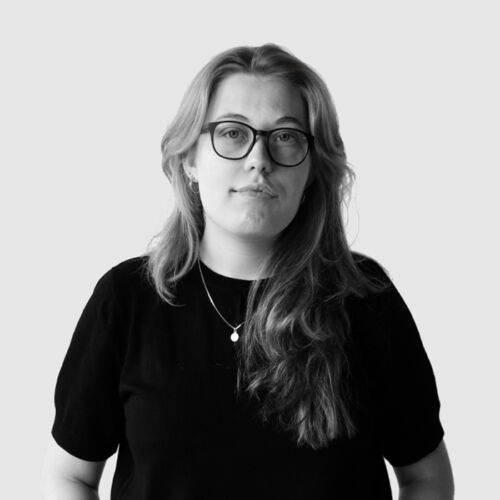
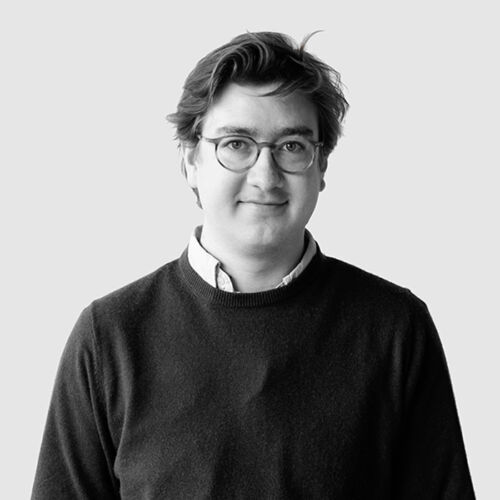
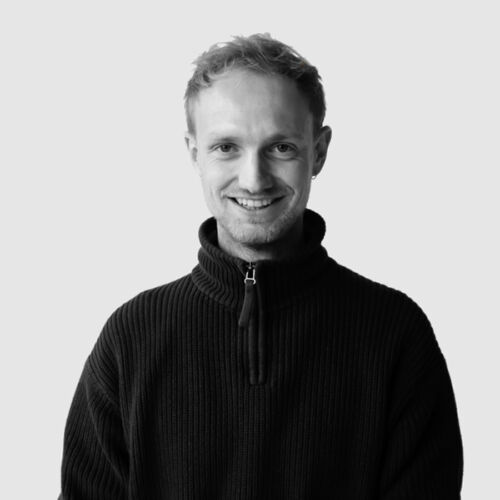



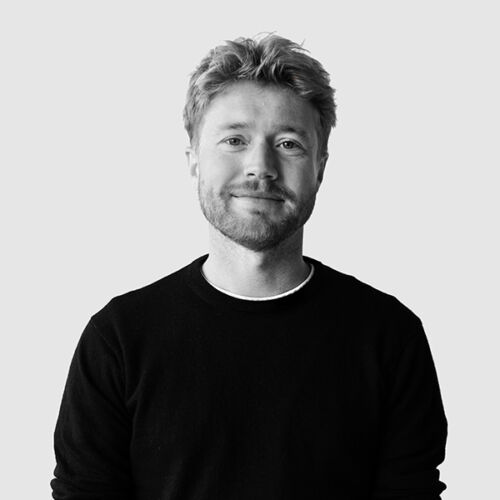
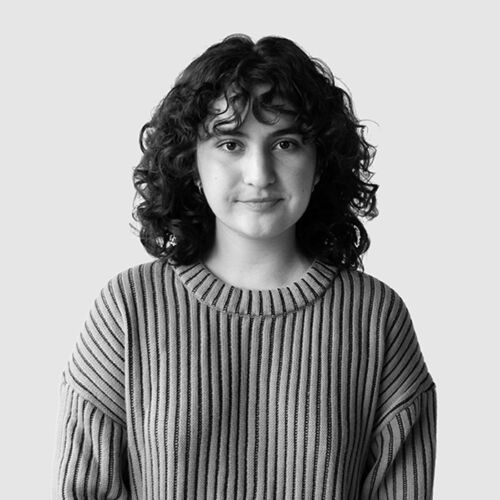
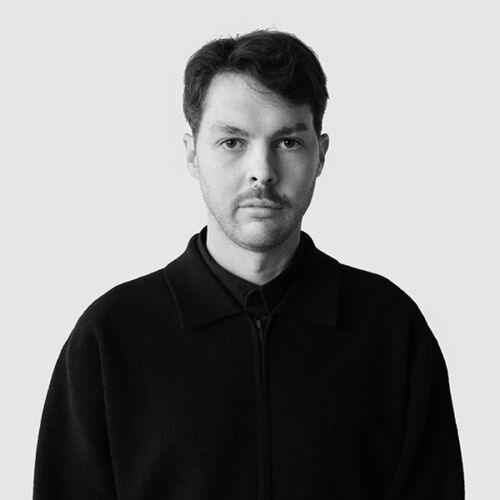
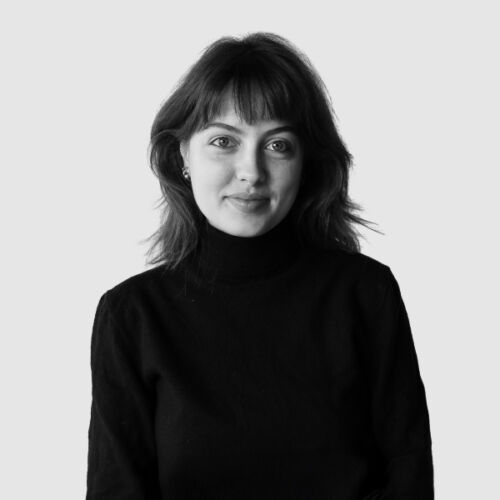
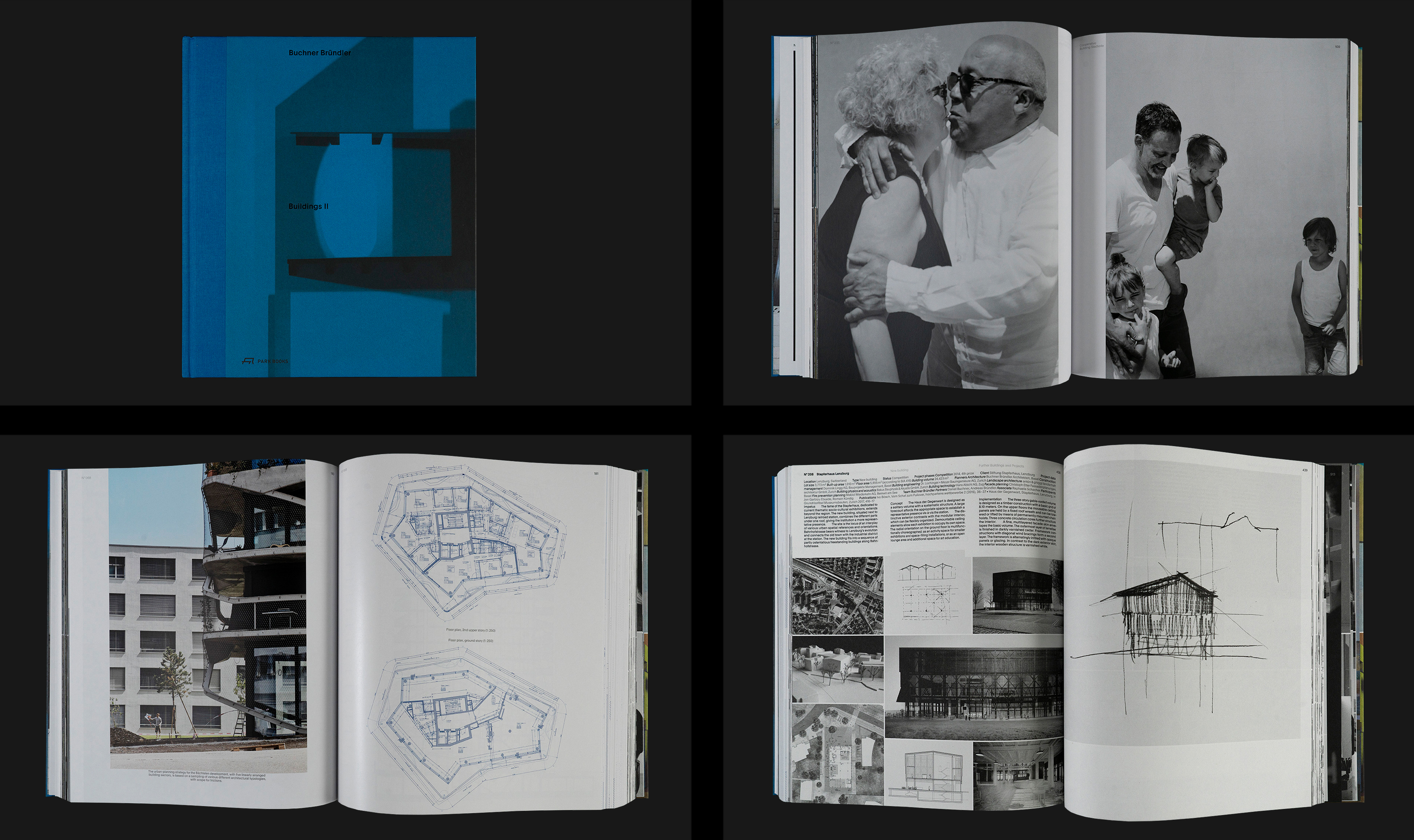


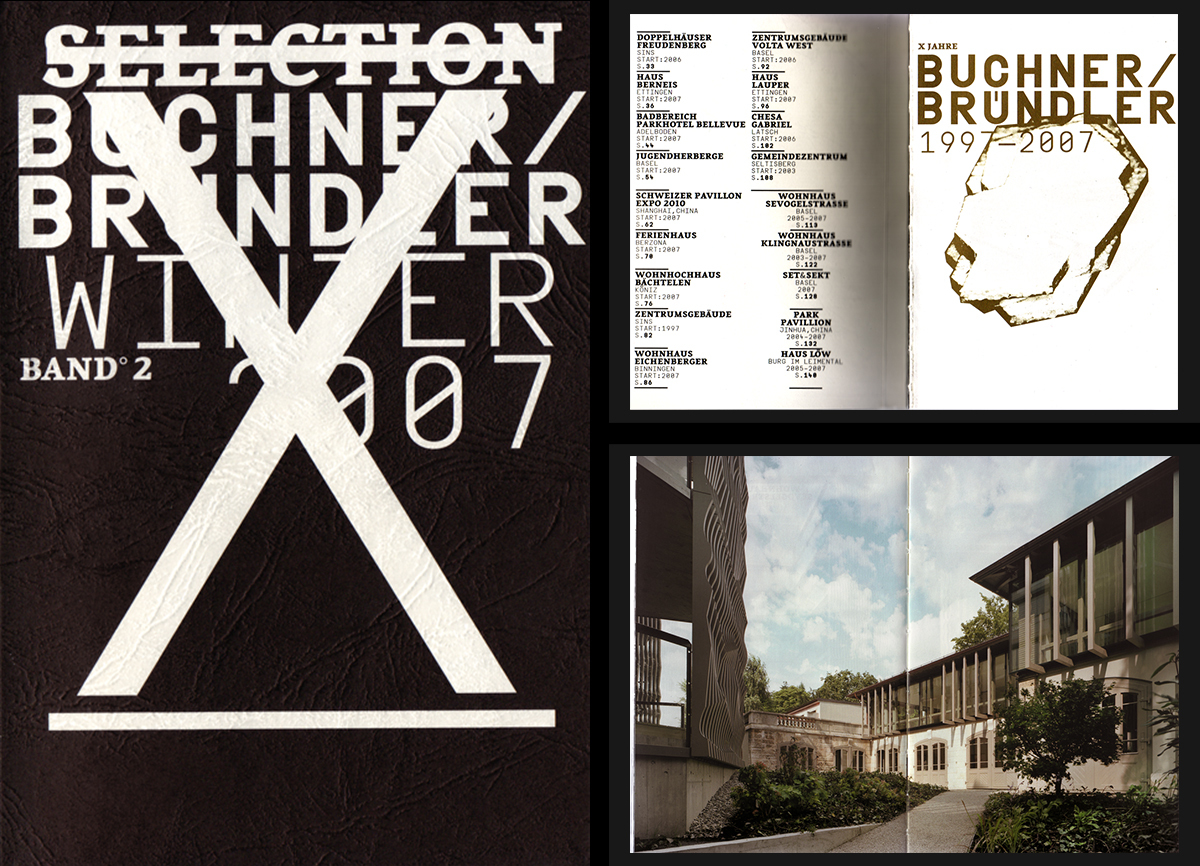

 New Port Headquarters Basel
New Port Headquarters Basel New administration building Kreuzboden, Liestal
New administration building Kreuzboden, Liestal Kunsthaus Baselland
Kunsthaus Baselland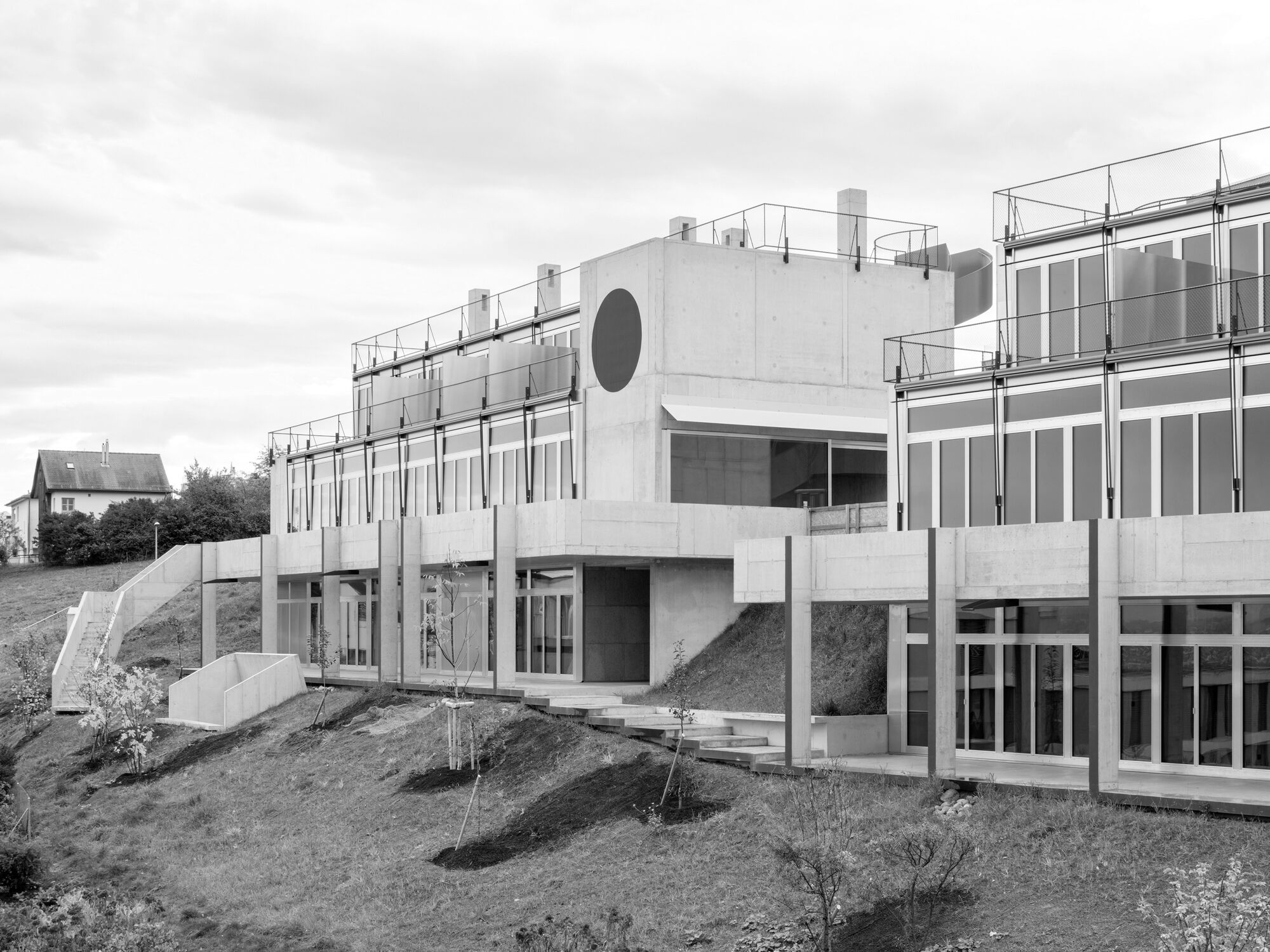 Housing Development Rötiboden
Housing Development Rötiboden Residential Development Eisenbahnweg
Residential Development Eisenbahnweg Service Building Bahnhofplatz
Service Building Bahnhofplatz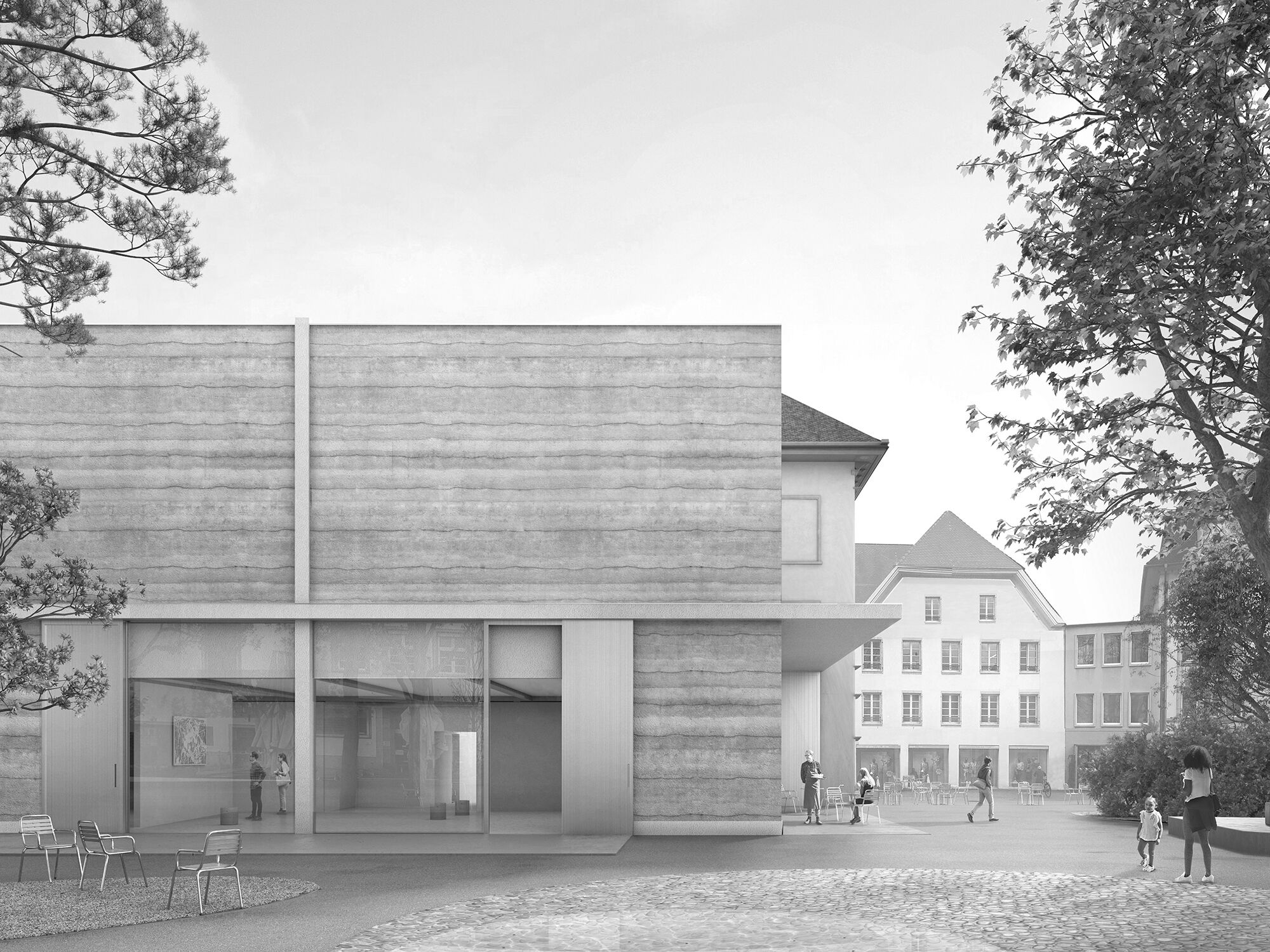 Kunstmuseum Olten
Kunstmuseum Olten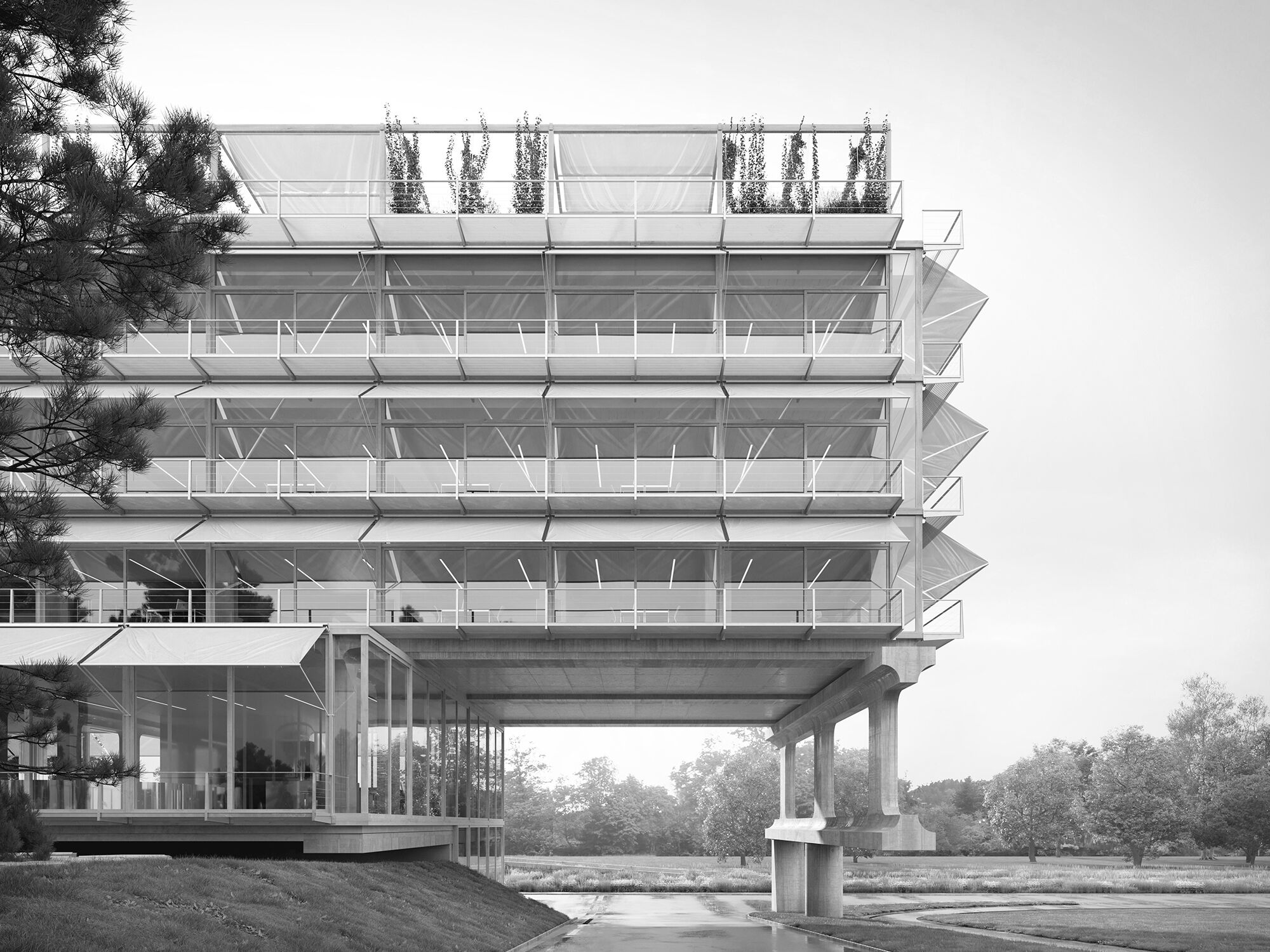 HIC ETH Zurich
HIC ETH Zurich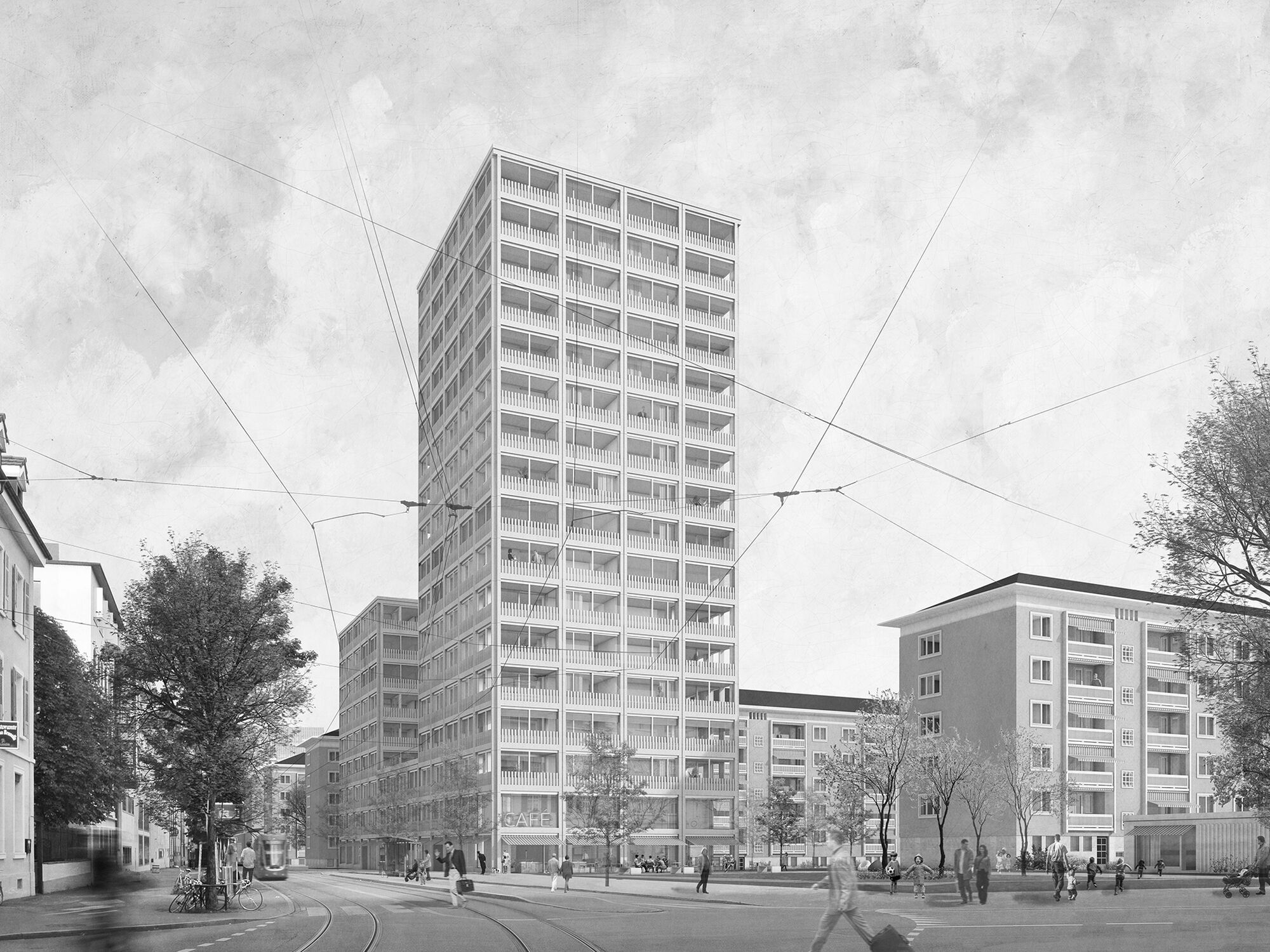 Horburg residential development Basel
Horburg residential development Basel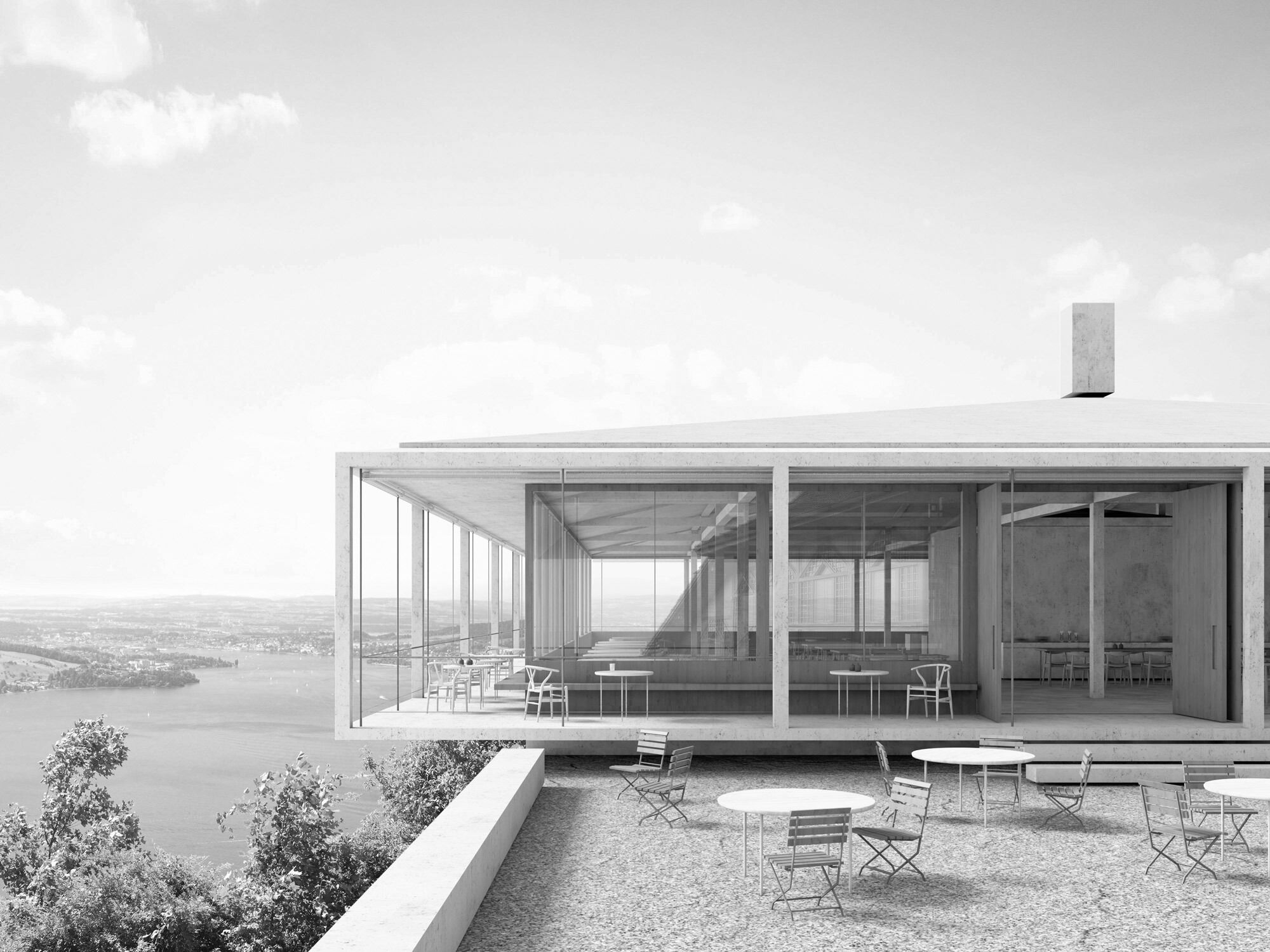 Fürigenareal
Fürigenareal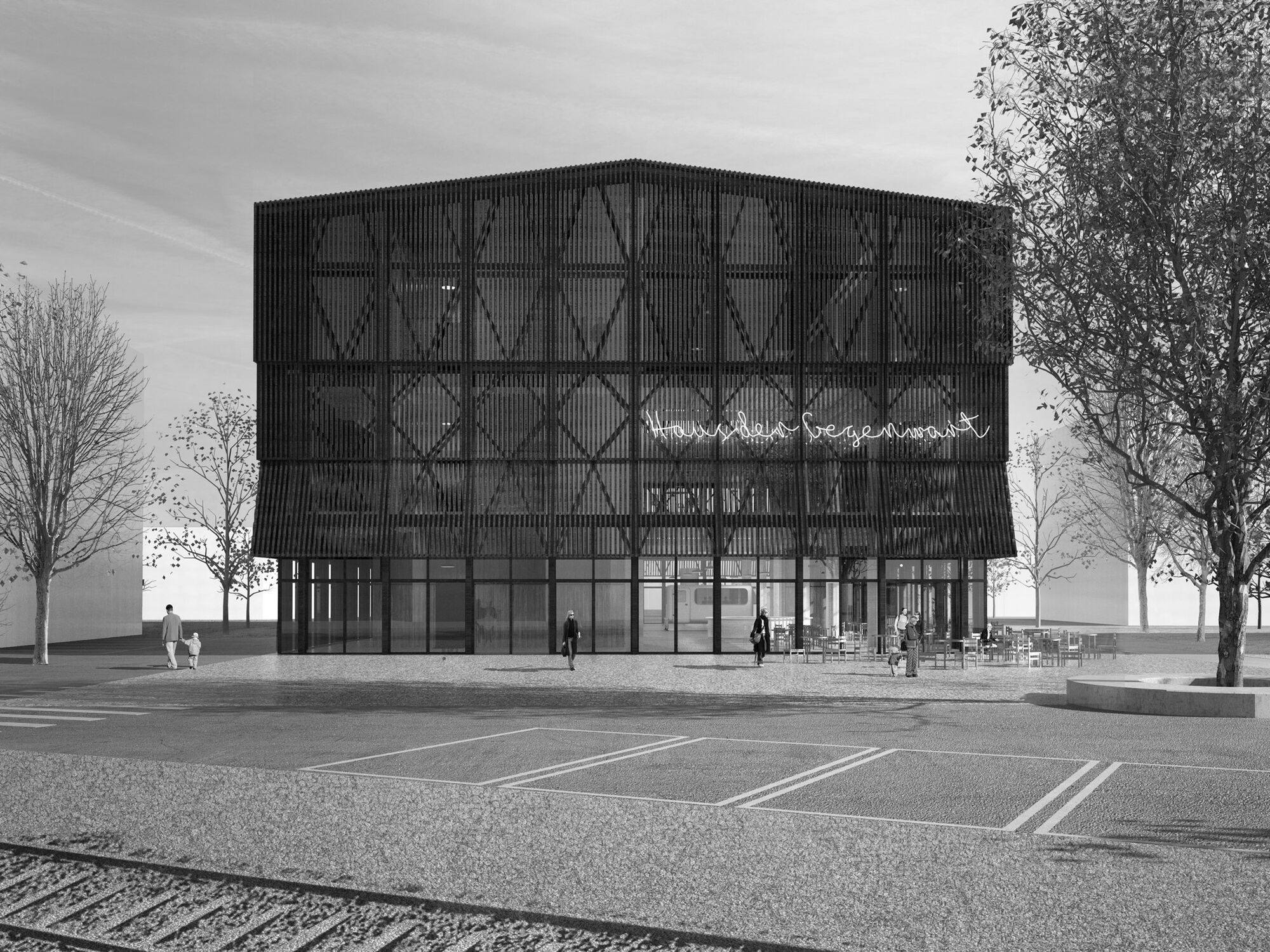 Stapferhaus Lenzburg
Stapferhaus Lenzburg Missionsstrasse House
Missionsstrasse House Allschwil House
Allschwil House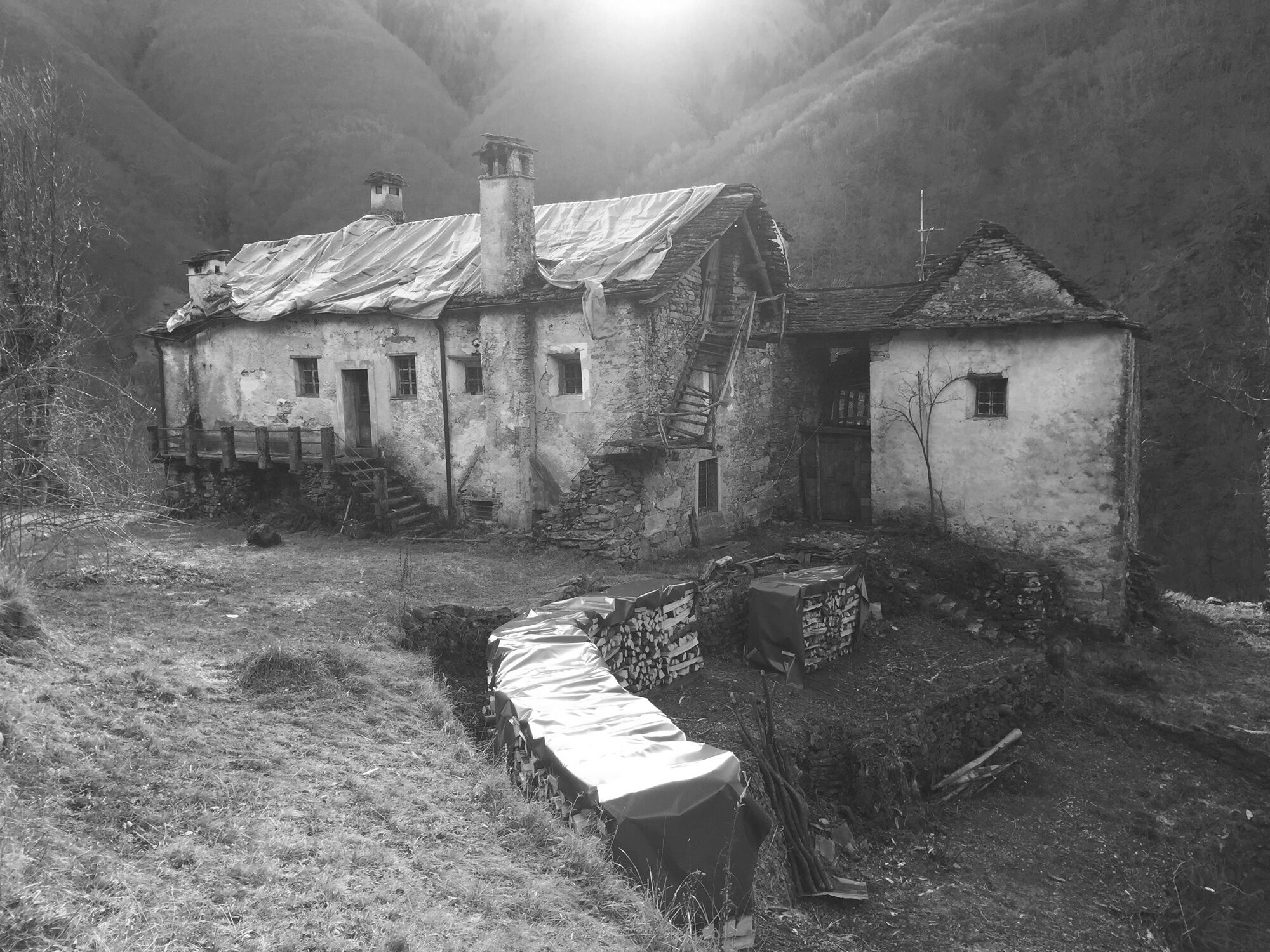 Casa Mosogno
Casa Mosogno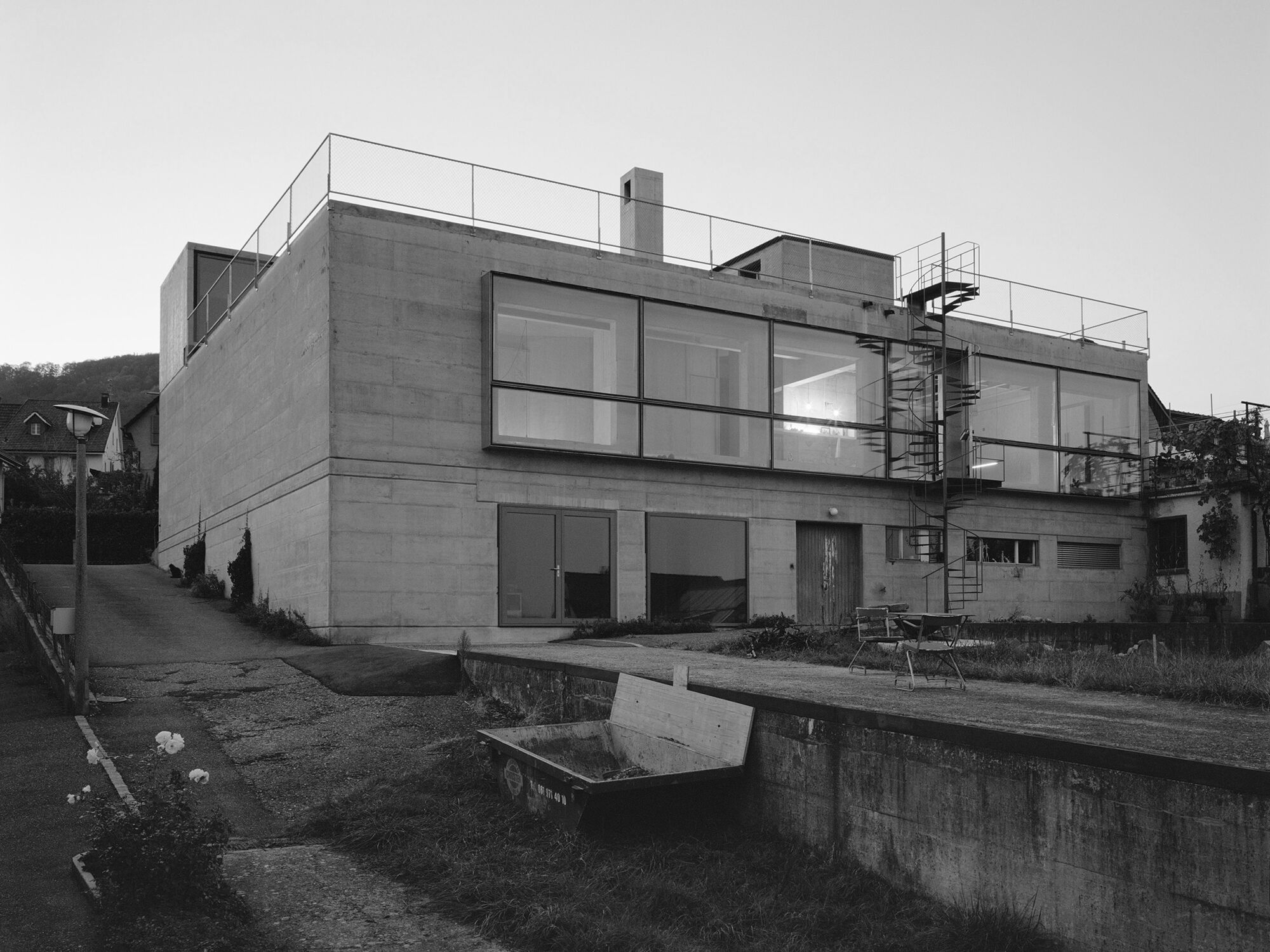 Cherry Storehouse Nuglar
Cherry Storehouse Nuglar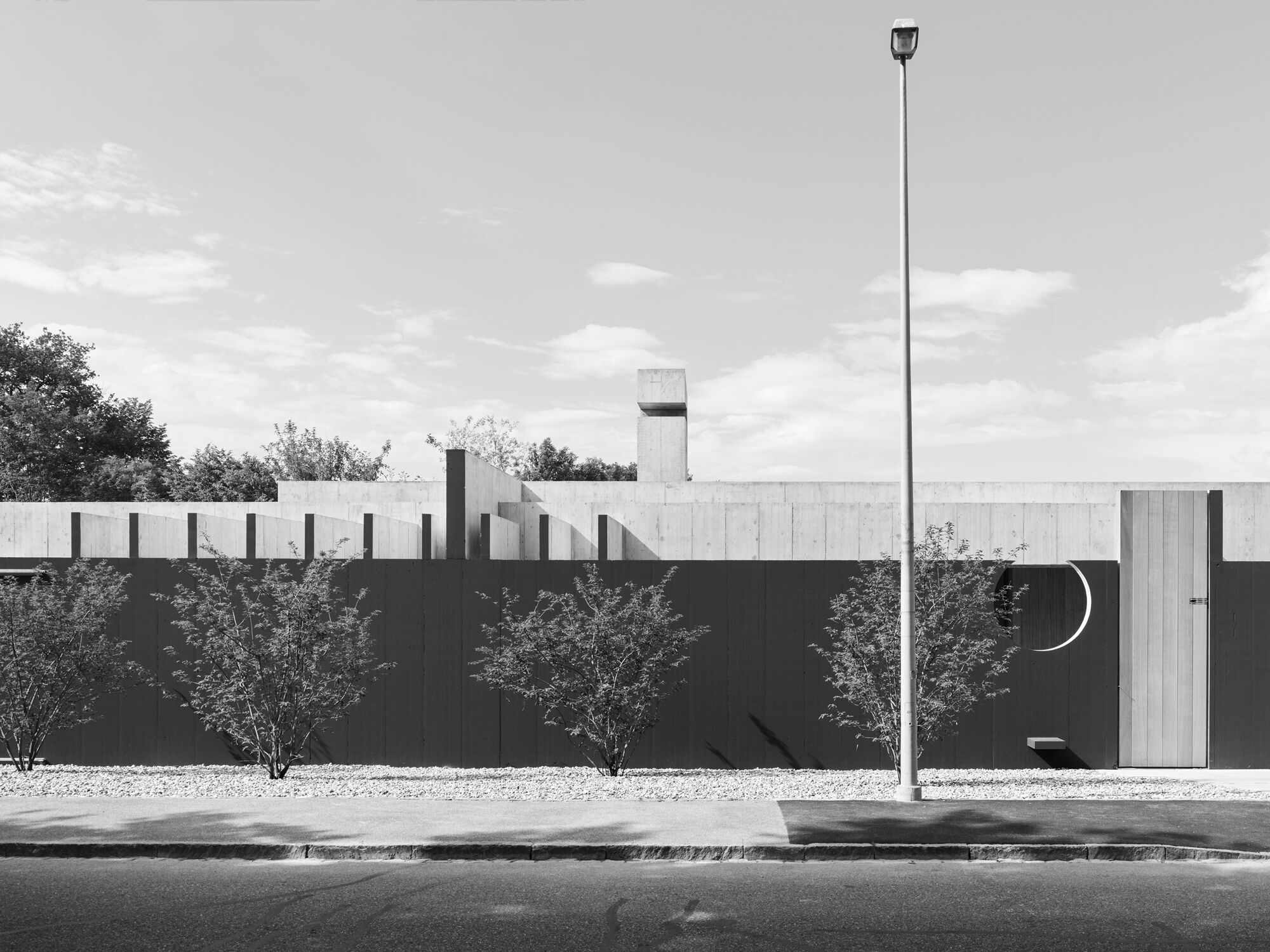 Kirschgarten House
Kirschgarten House Accademia di Architettura
Accademia di Architettura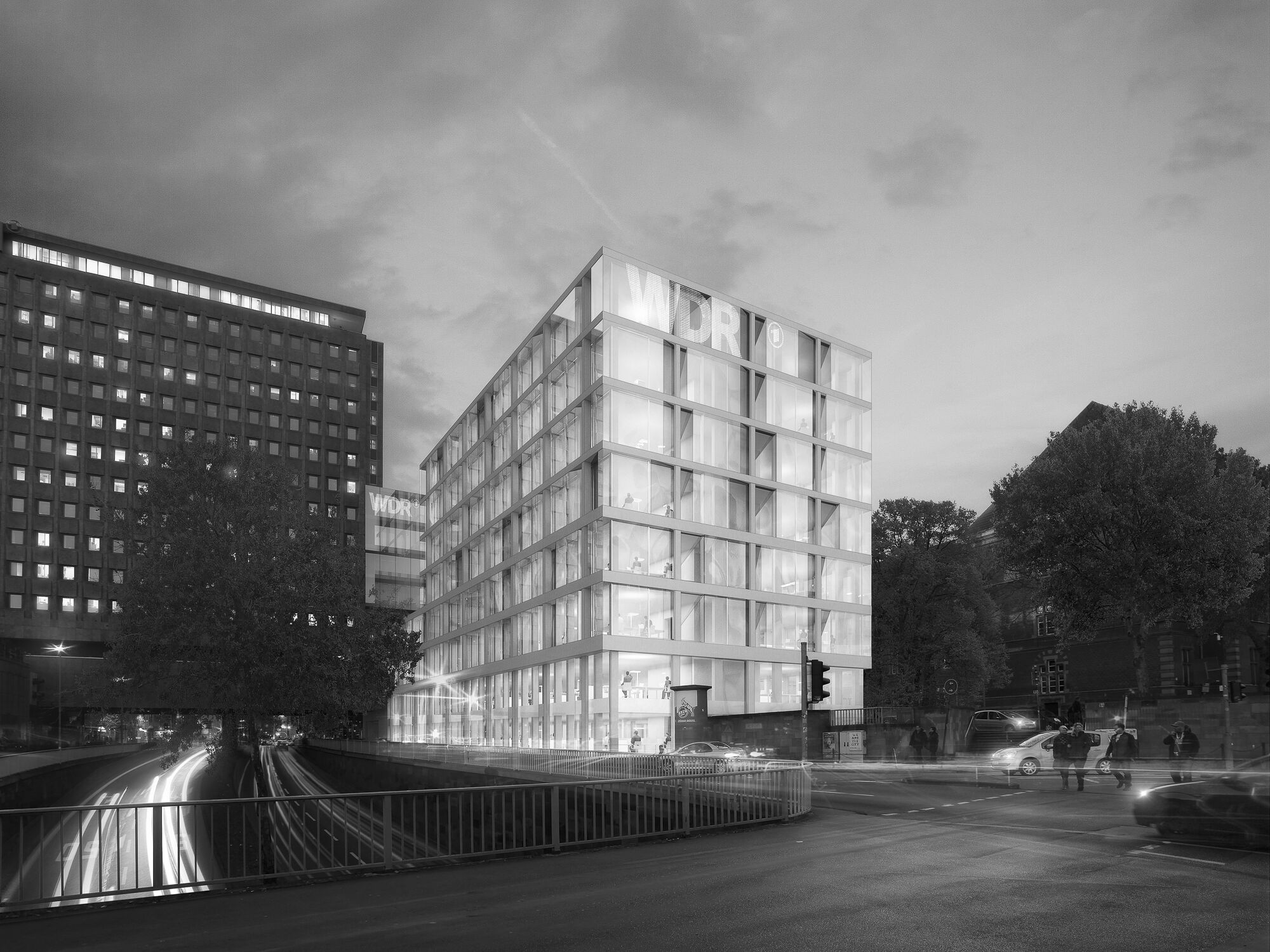 WDR-Filmhaus
WDR-Filmhaus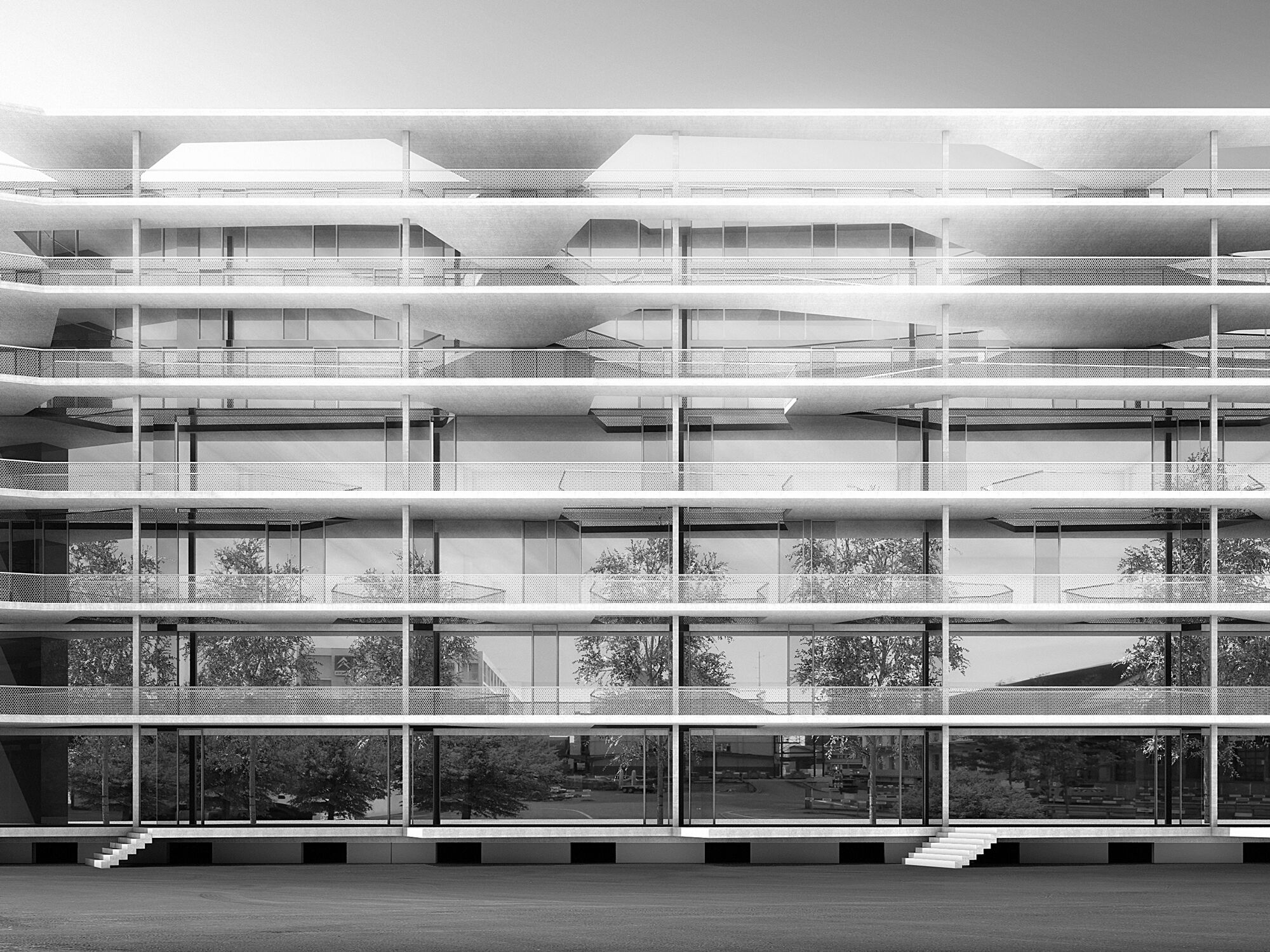 Transitlager Münchenstein
Transitlager Münchenstein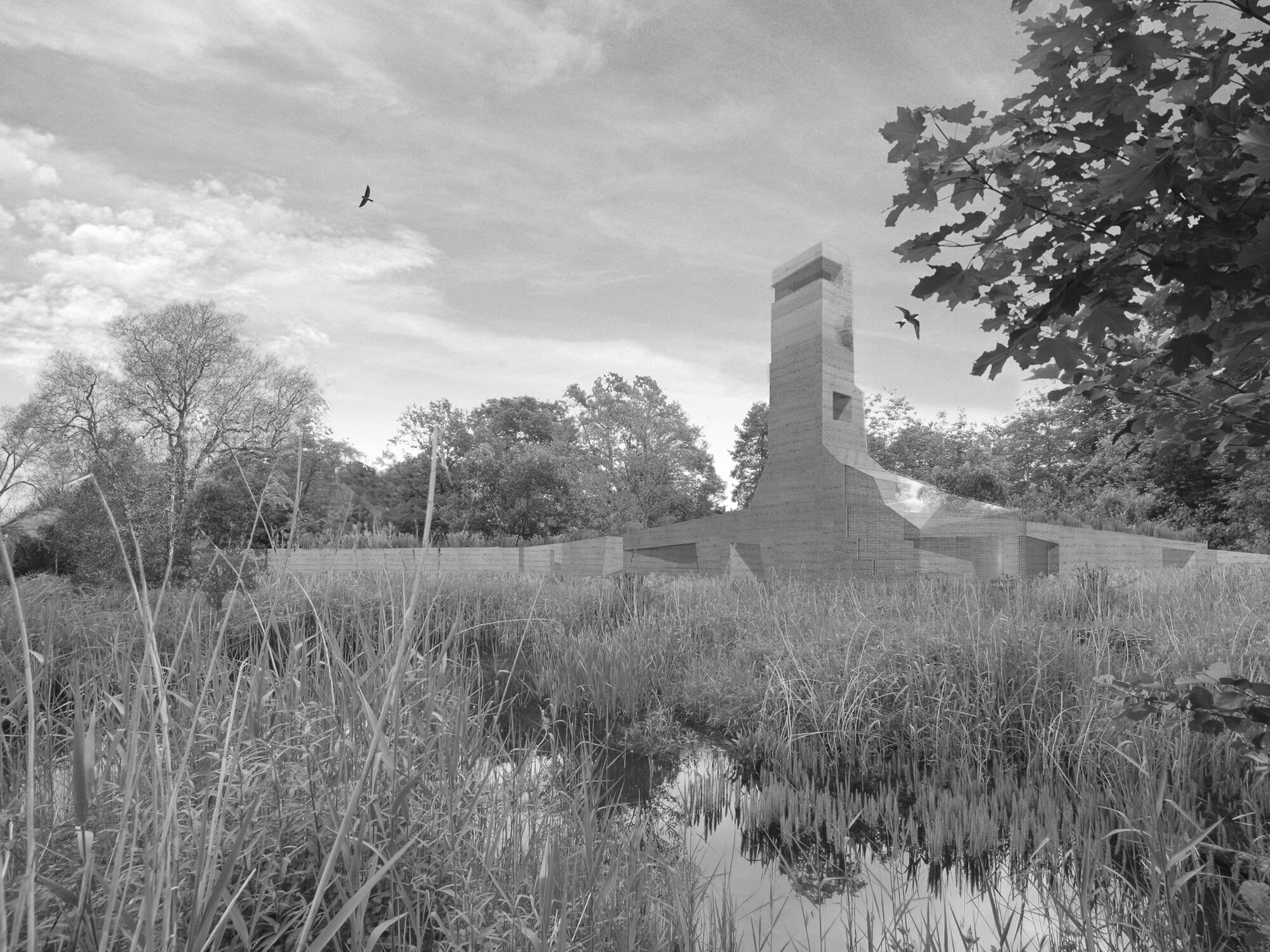 Ornithological Centre Sempach
Ornithological Centre Sempach Kunsthaus Zürich
Kunsthaus Zürich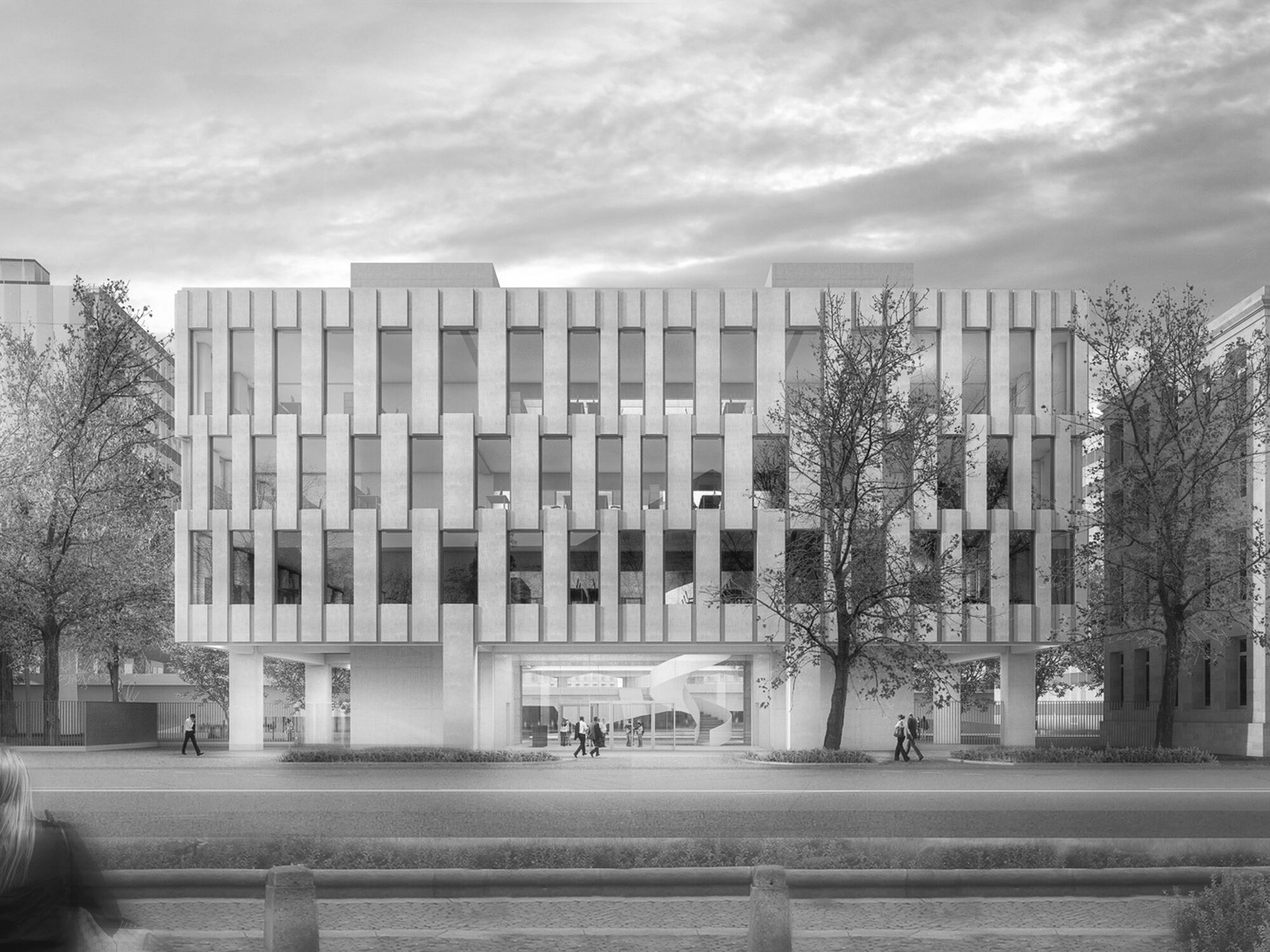 Syngenta Headquarters
Syngenta Headquarters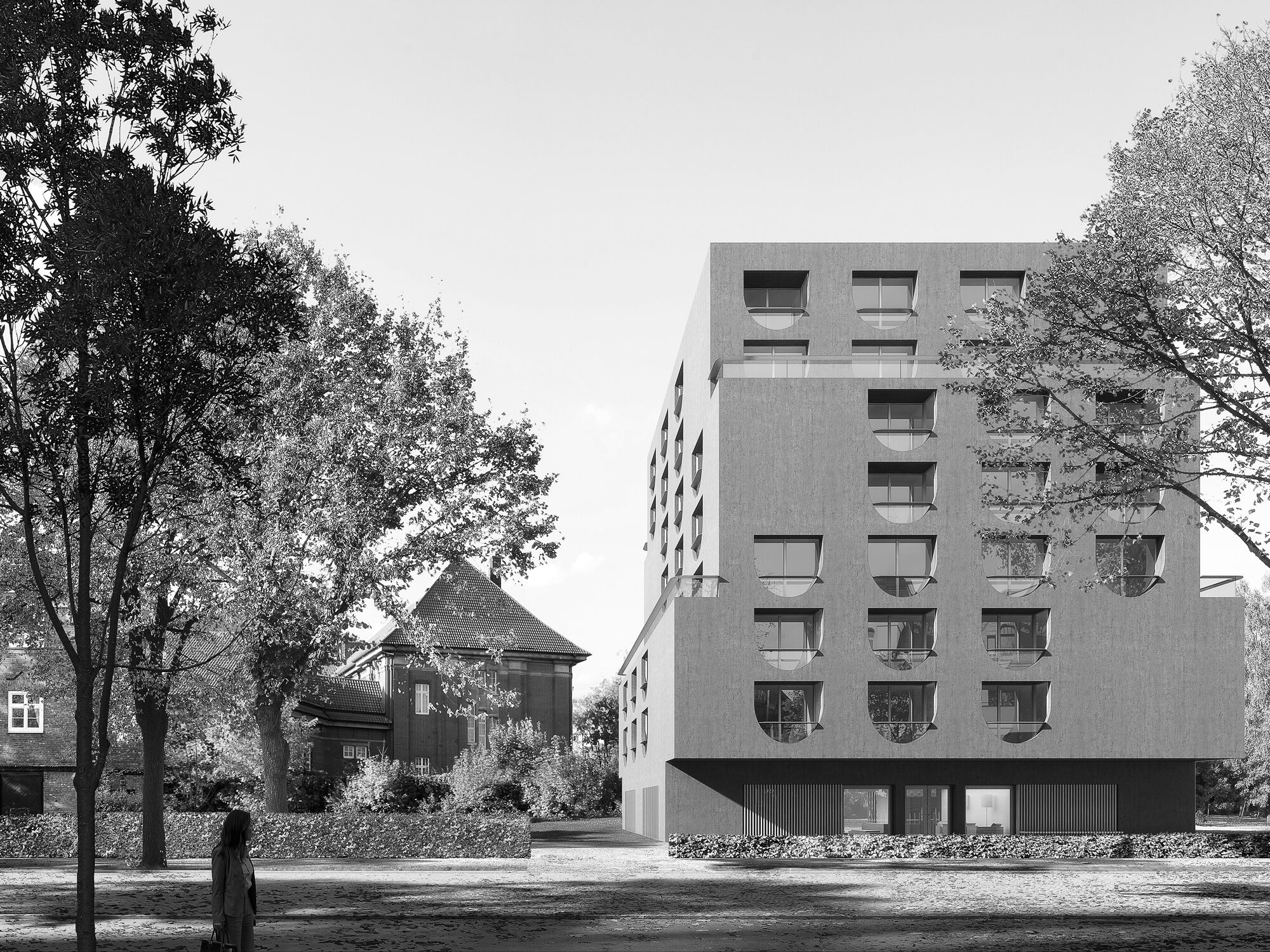 University Guest House Hamburg
University Guest House Hamburg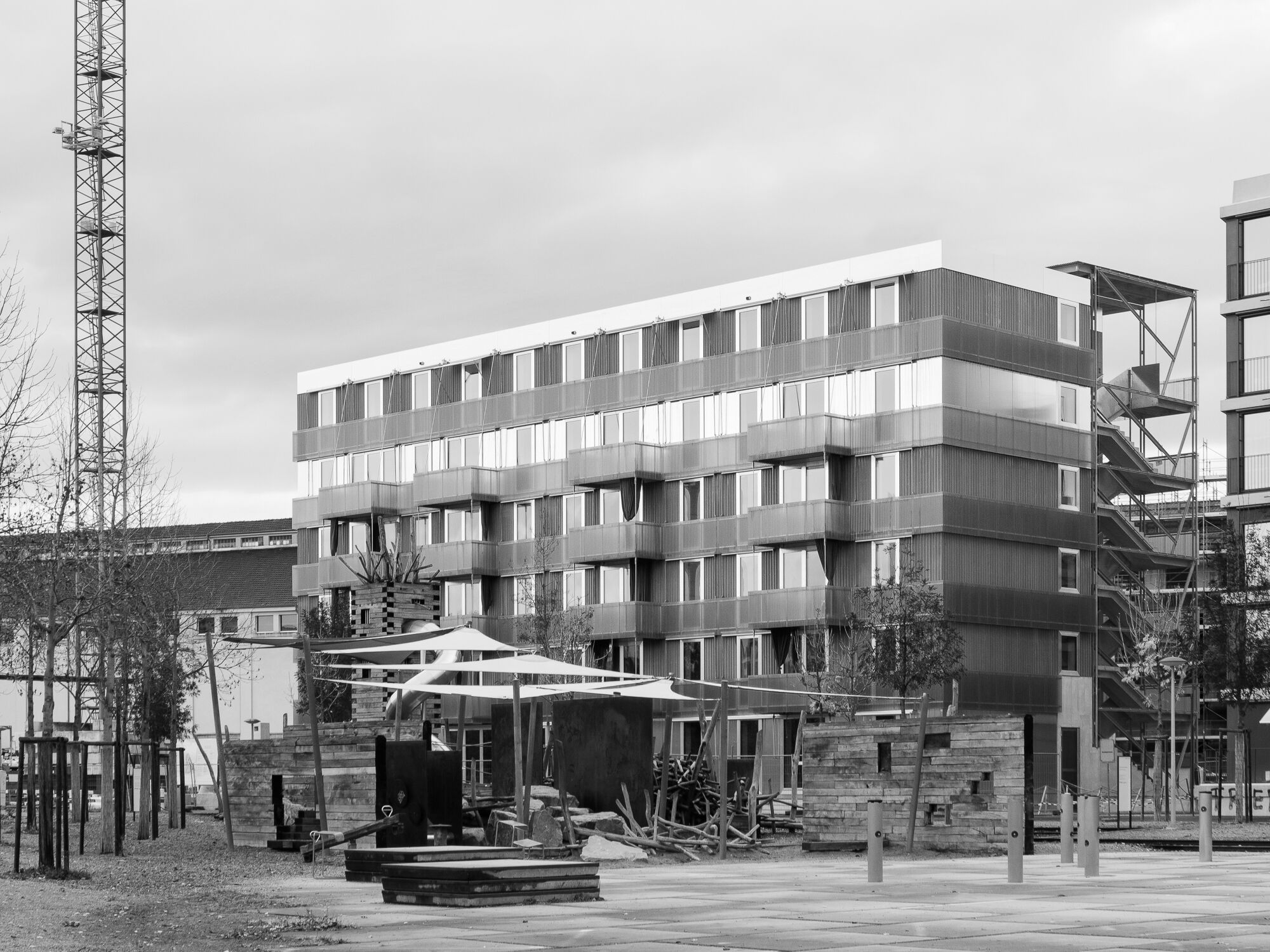 Cooperative Building Stadterle
Cooperative Building Stadterle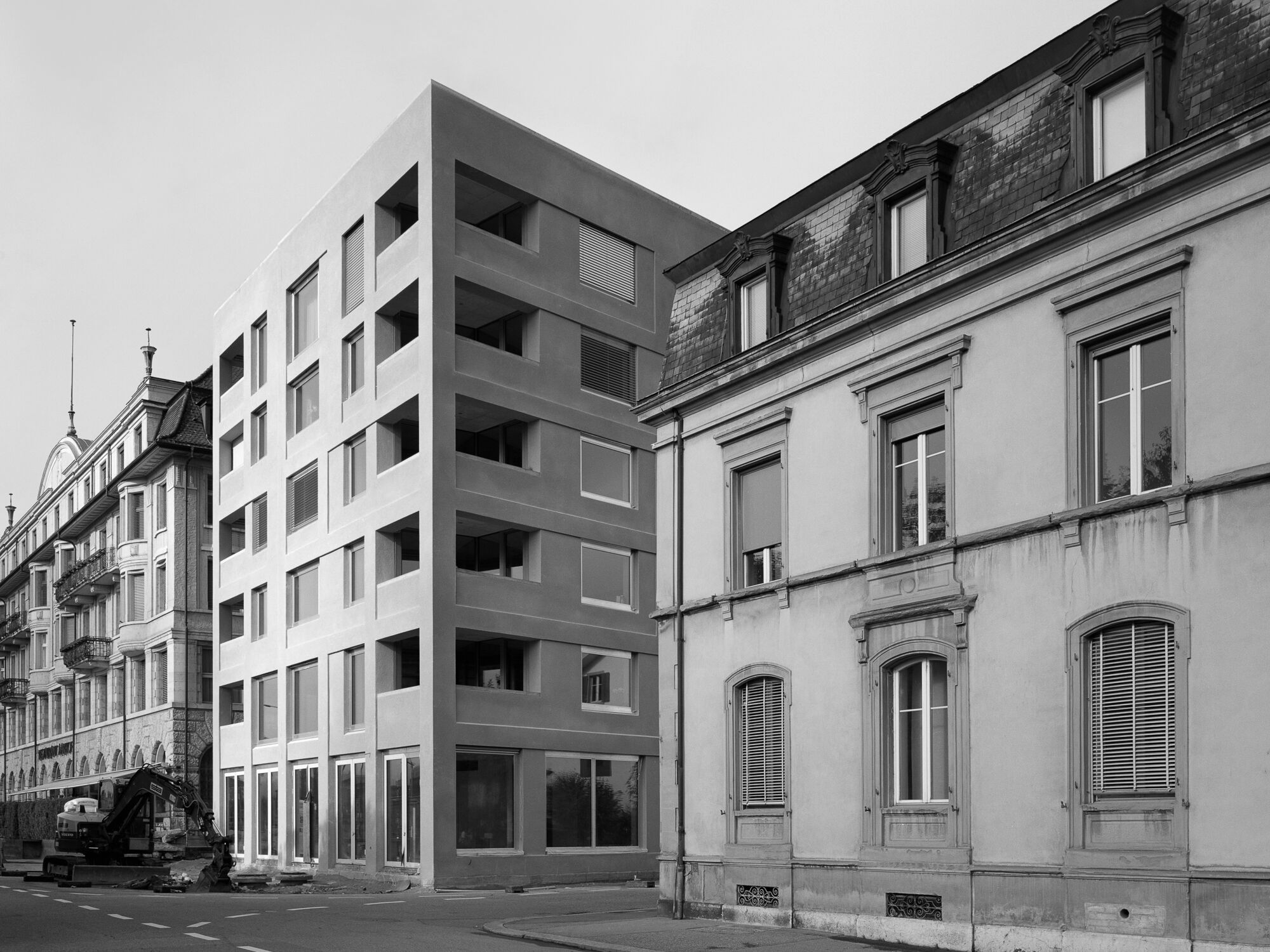 Residential Building Amthausquai
Residential Building Amthausquai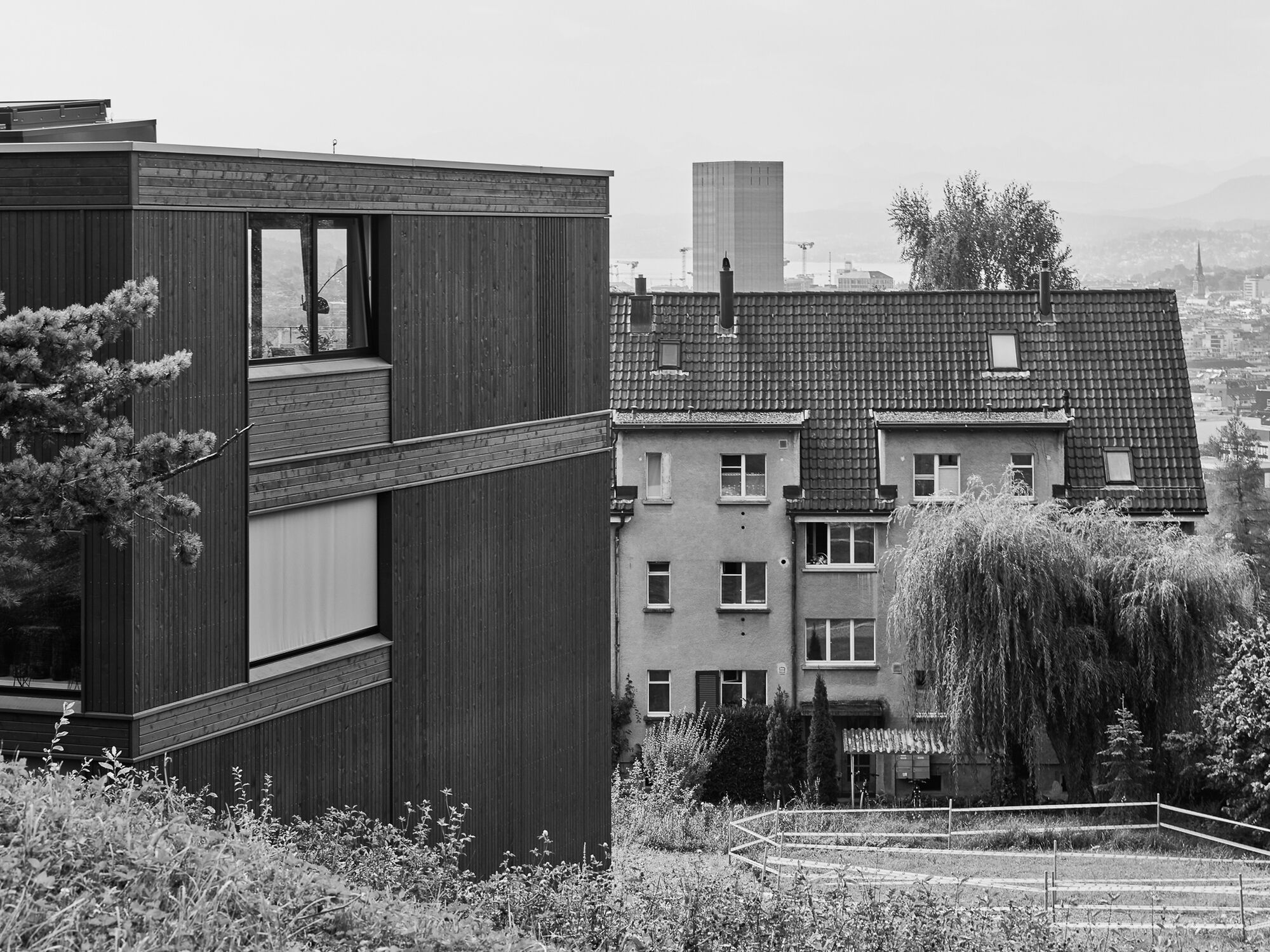 Residential Housing Tièchestrasse
Residential Housing Tièchestrasse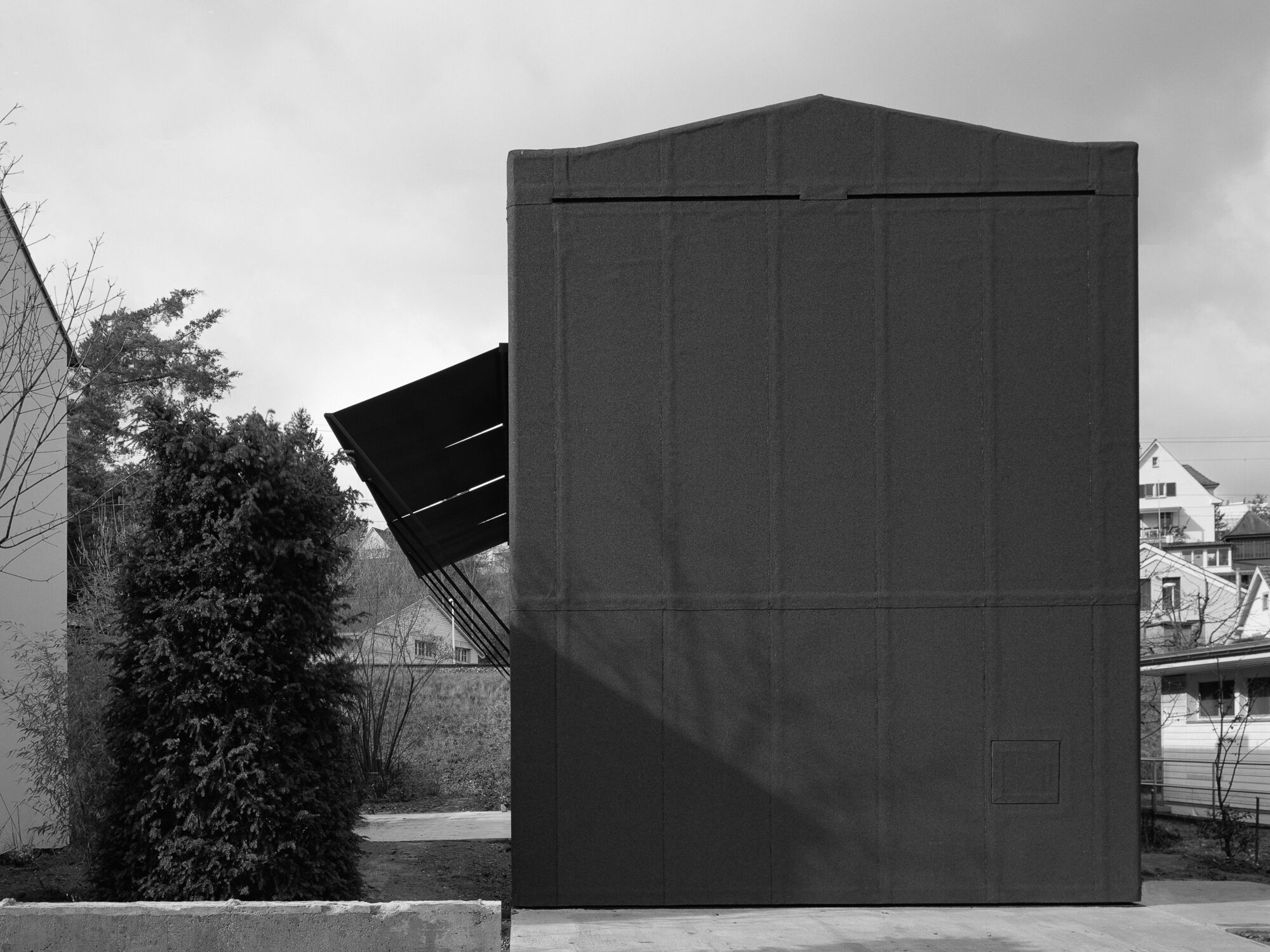 Münchenstein House
Münchenstein House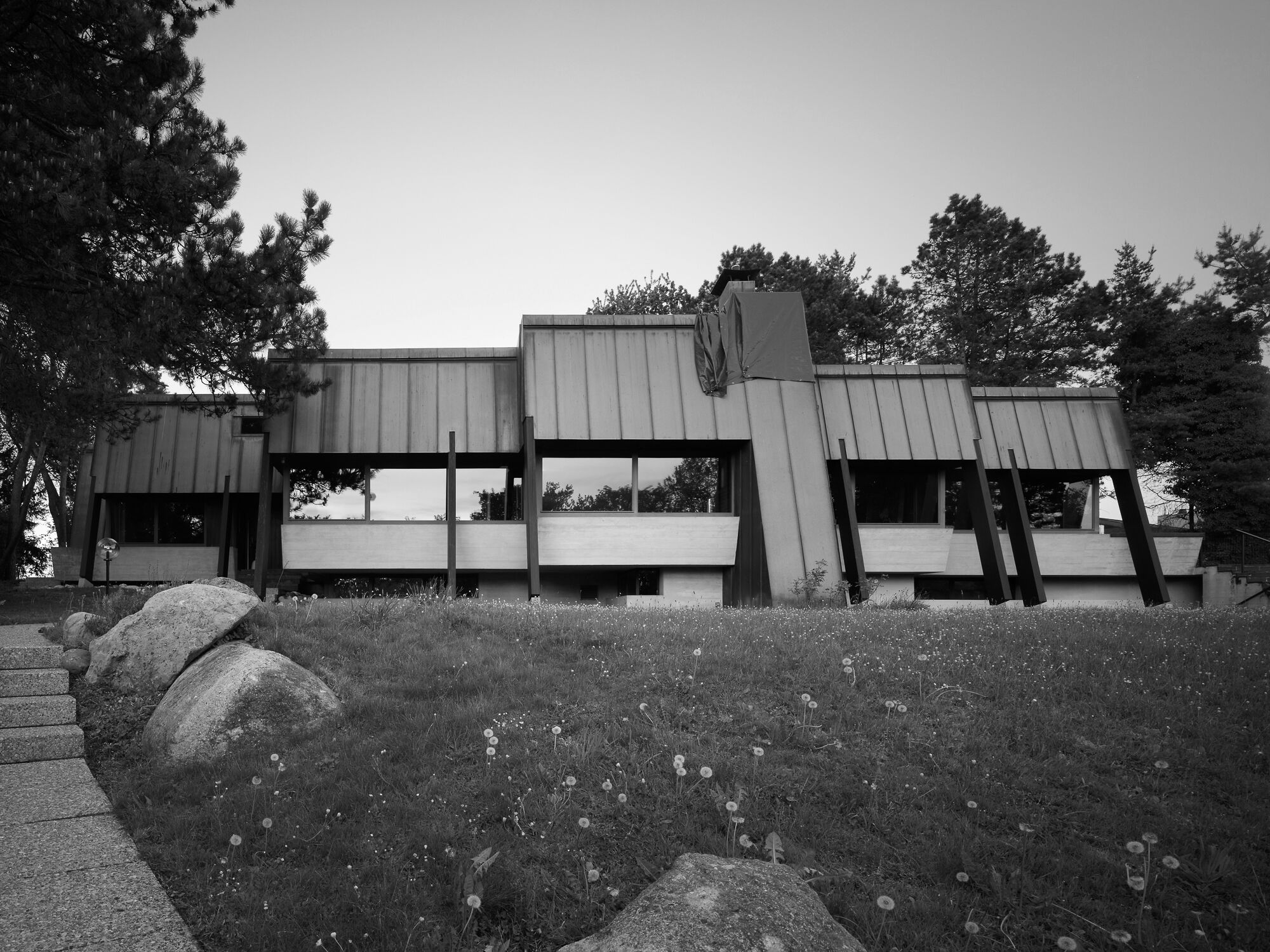 Greifensee House
Greifensee House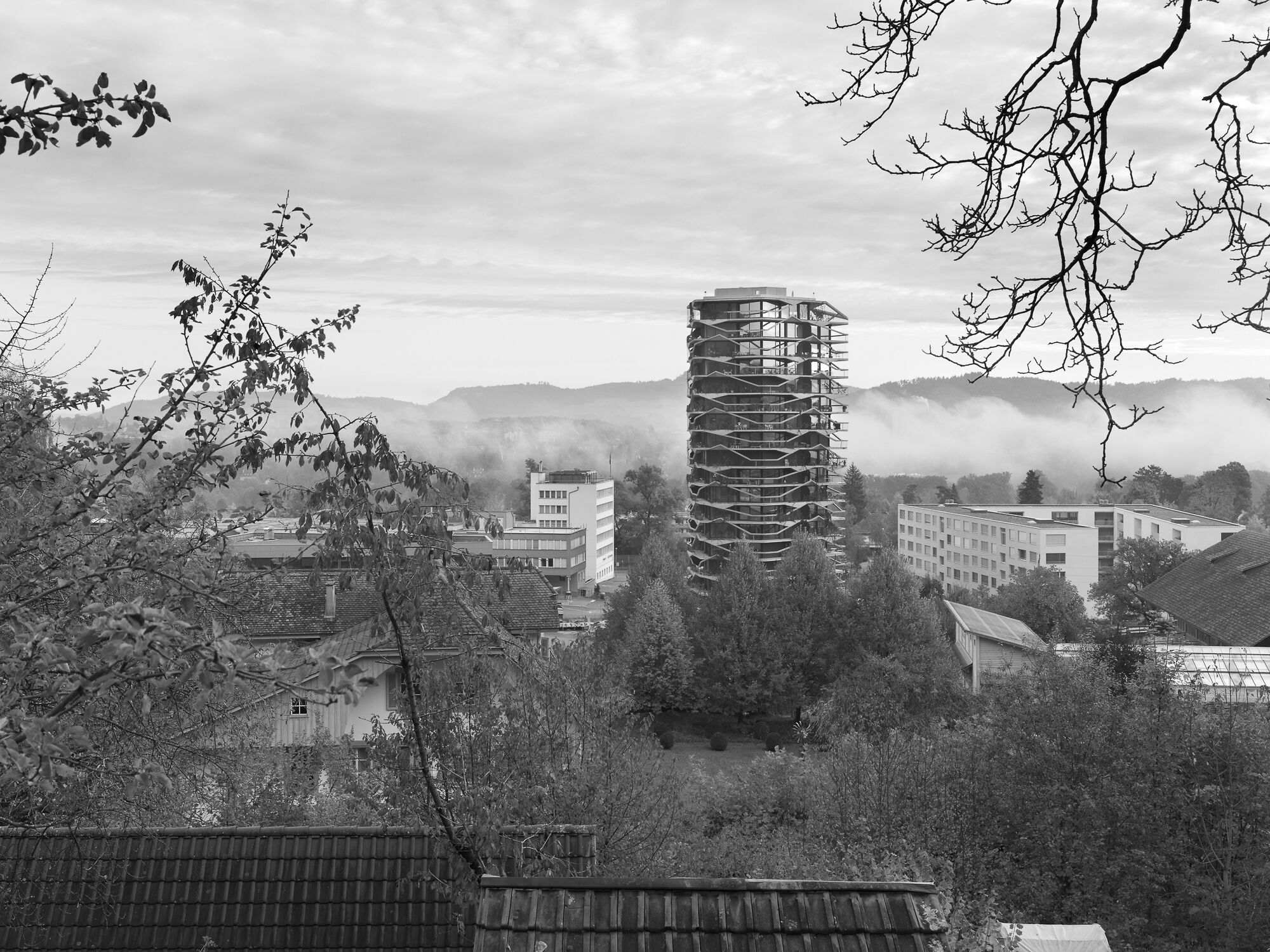 Garden Tower
Garden Tower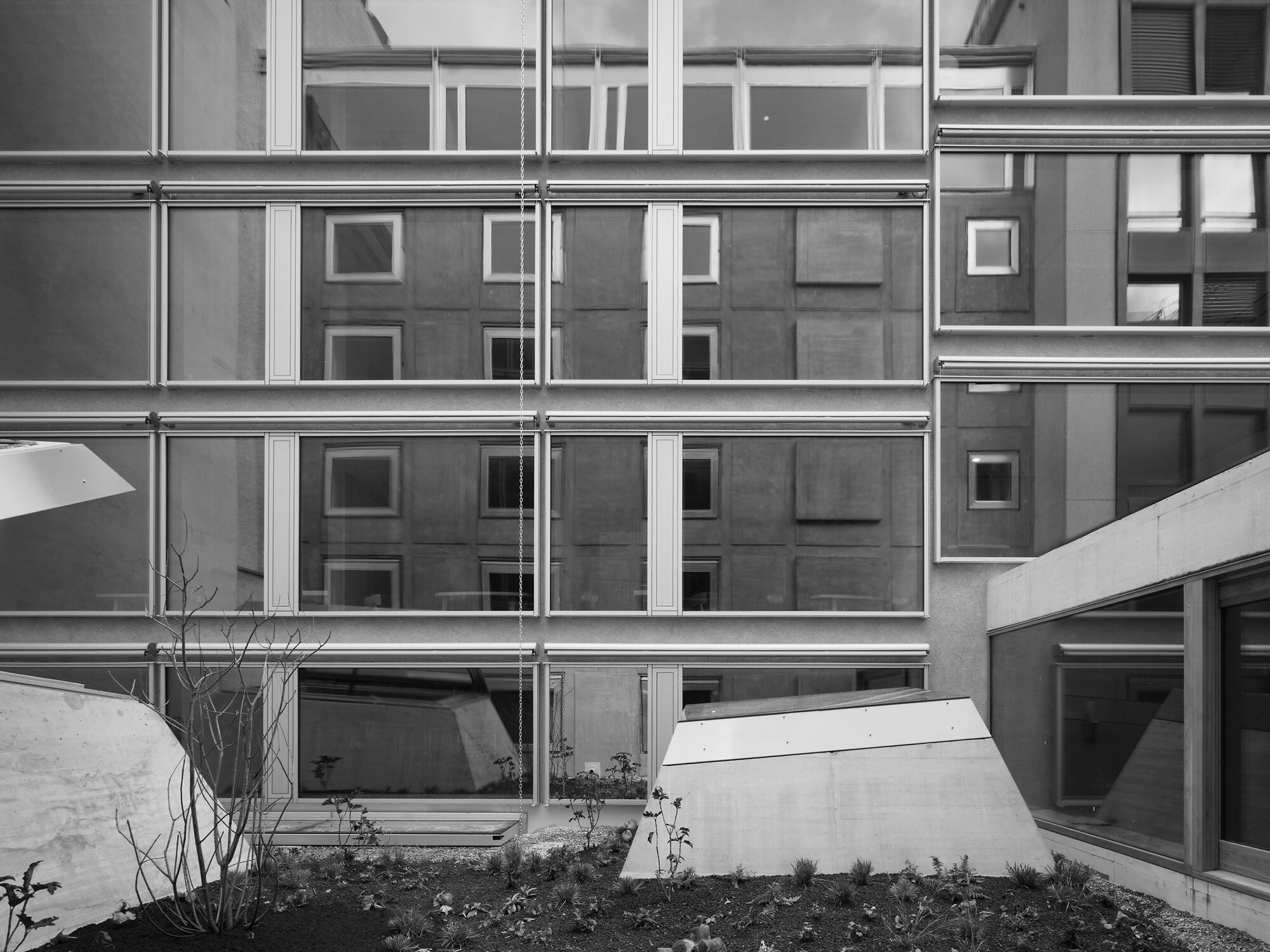 Hotel Nomad
Hotel Nomad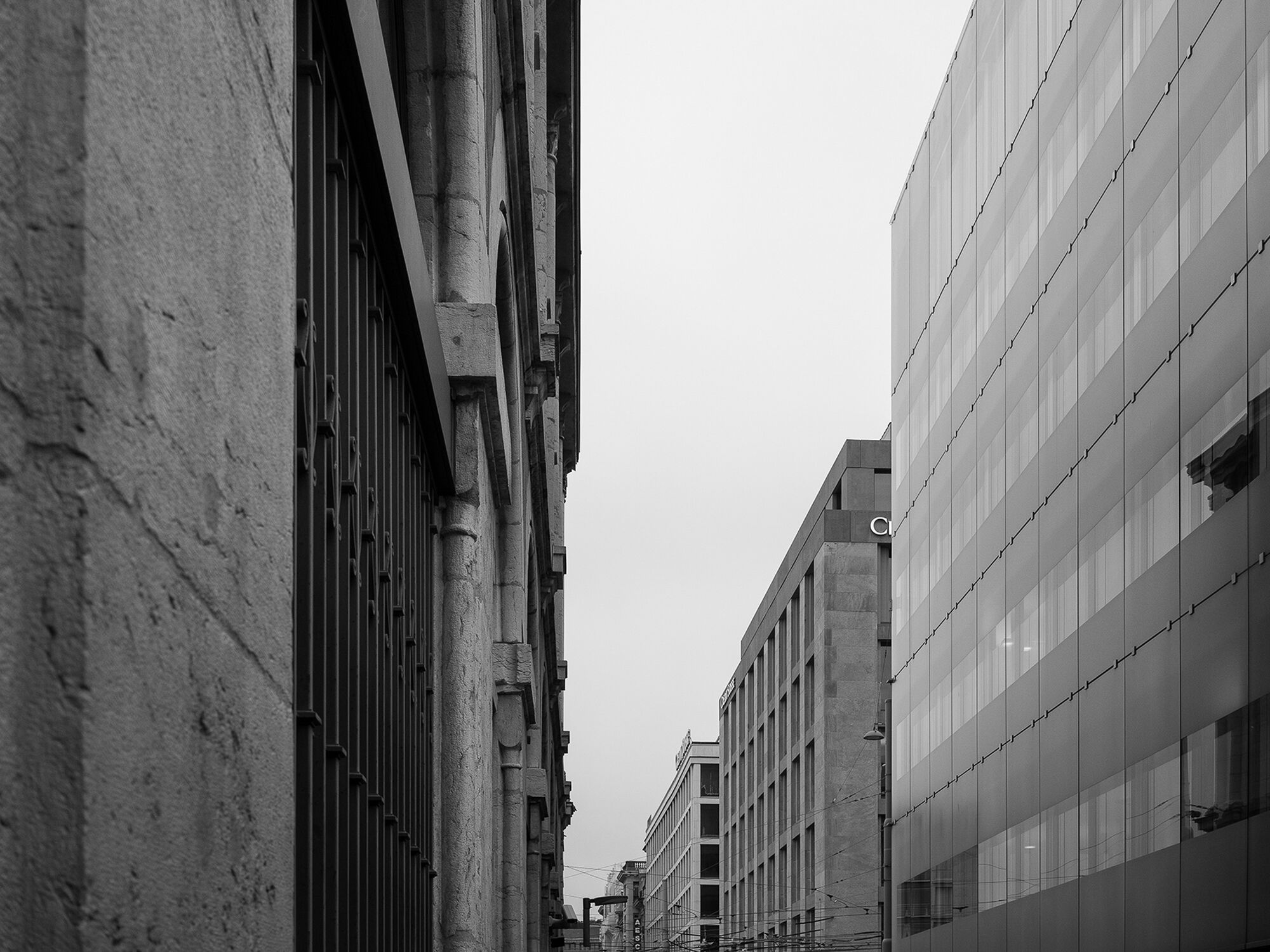 Credit Suisse
Credit Suisse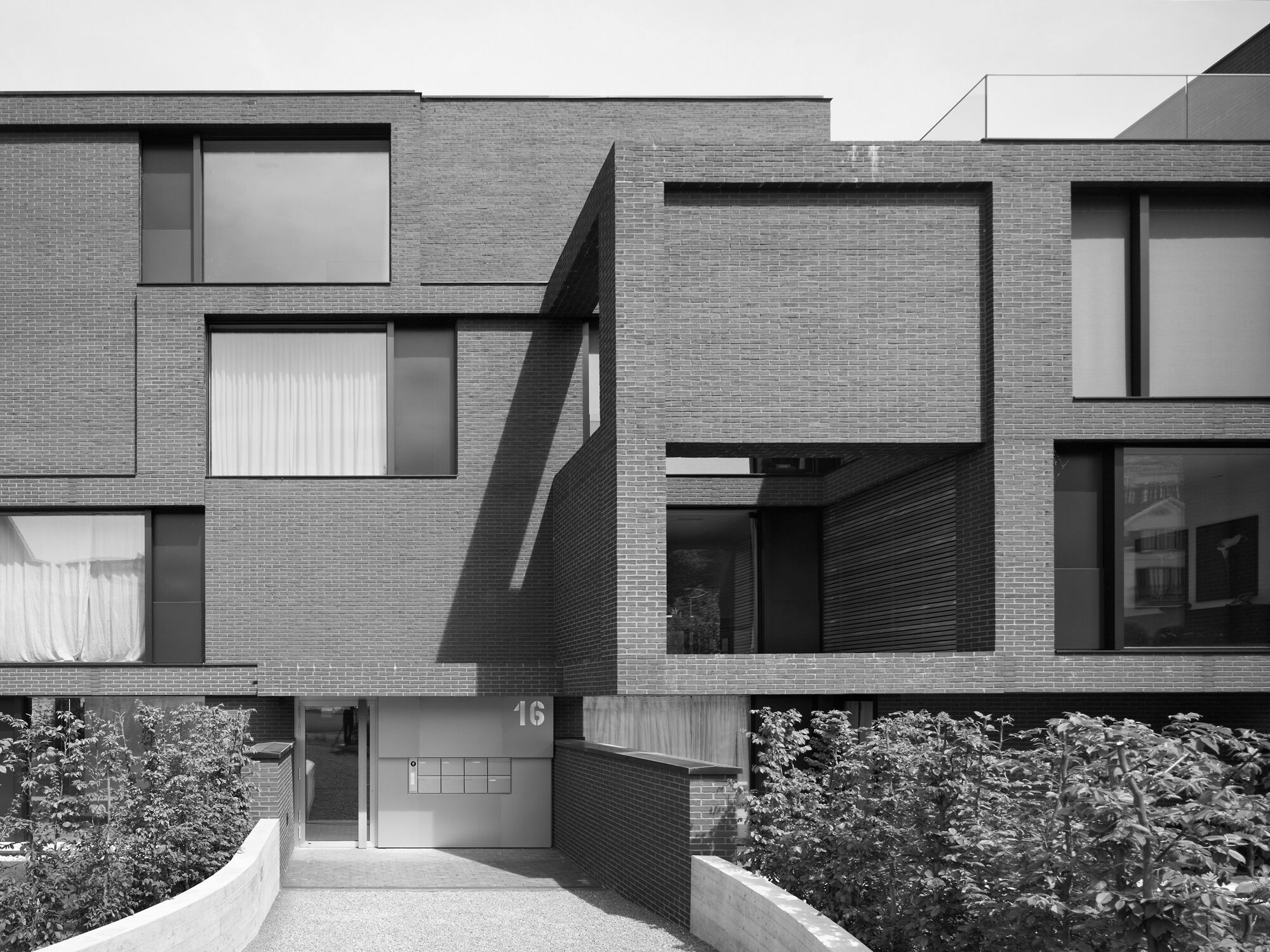 Residential Housing Peninsula
Residential Housing Peninsula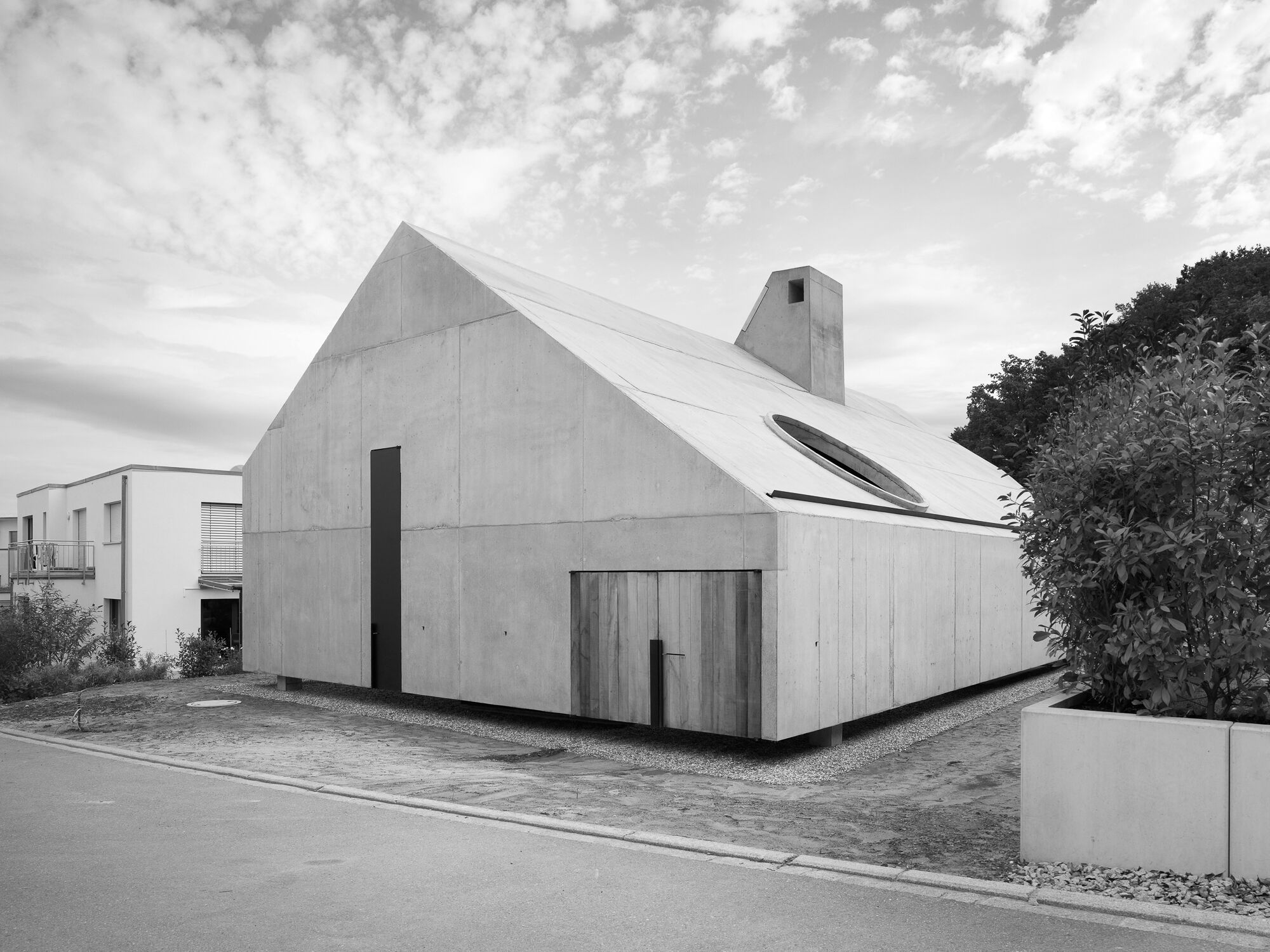 Lörrach House
Lörrach House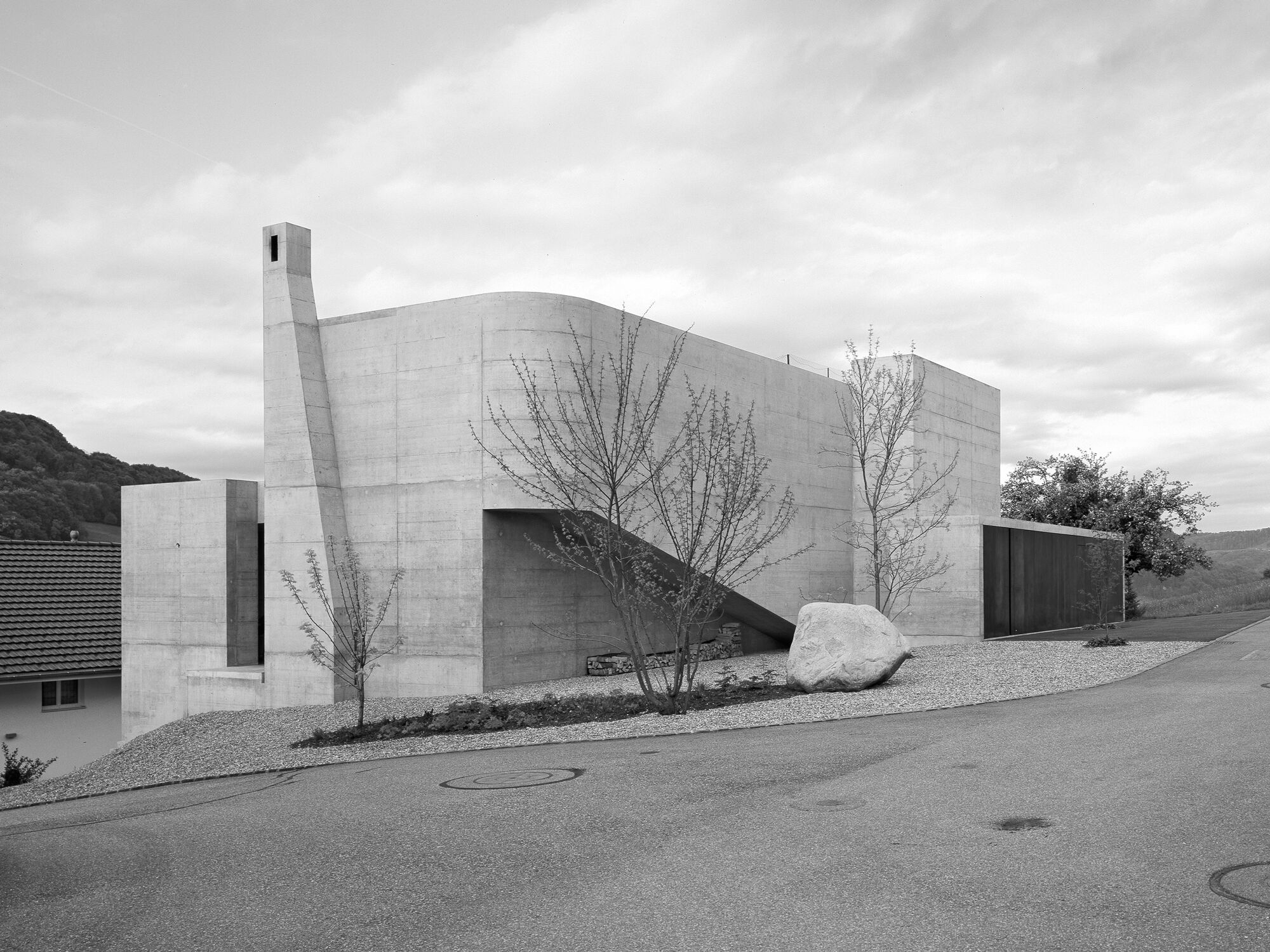 Chienbergreben House
Chienbergreben House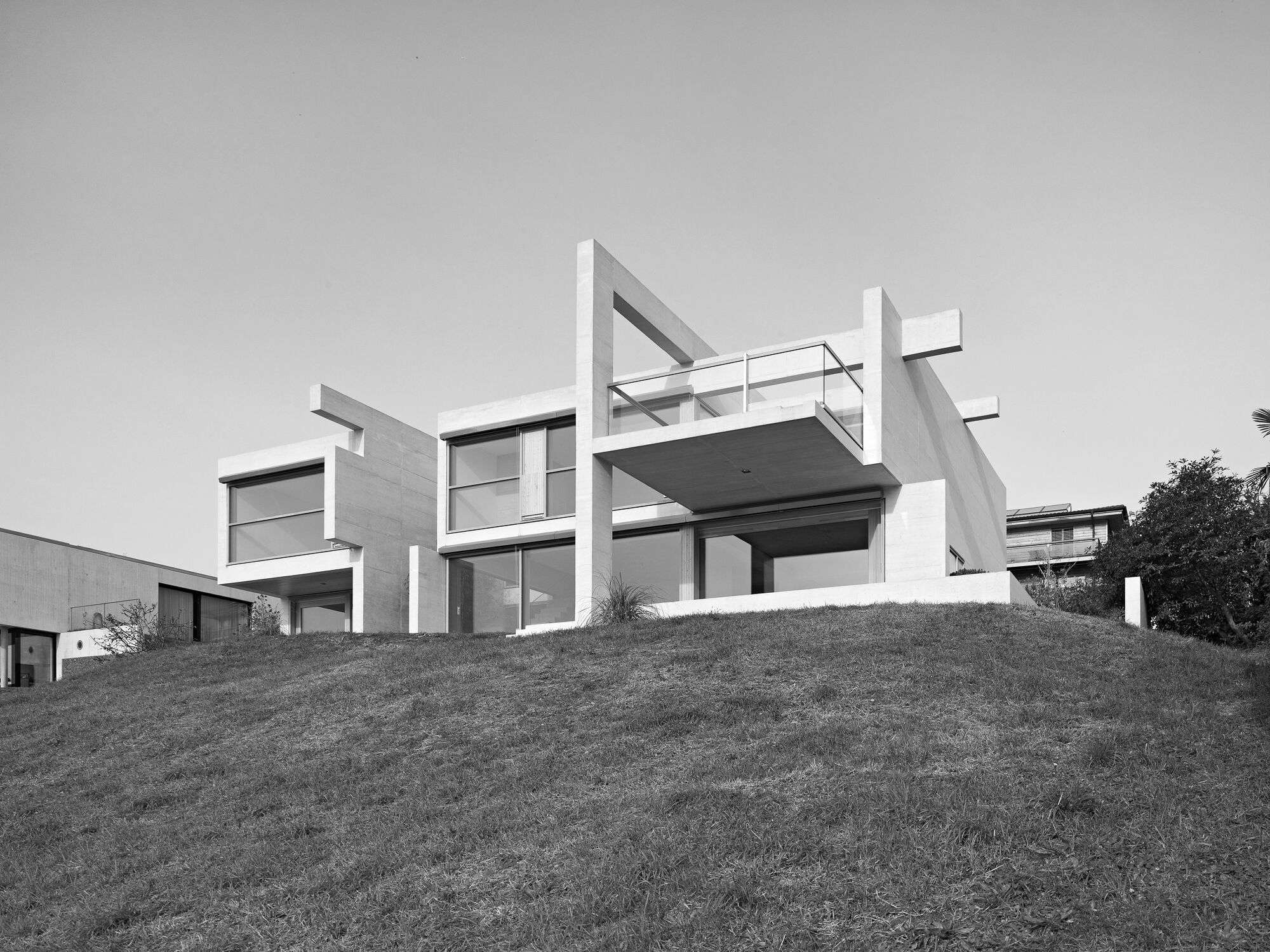 Hertenstein House
Hertenstein House Bläsiring House
Bläsiring House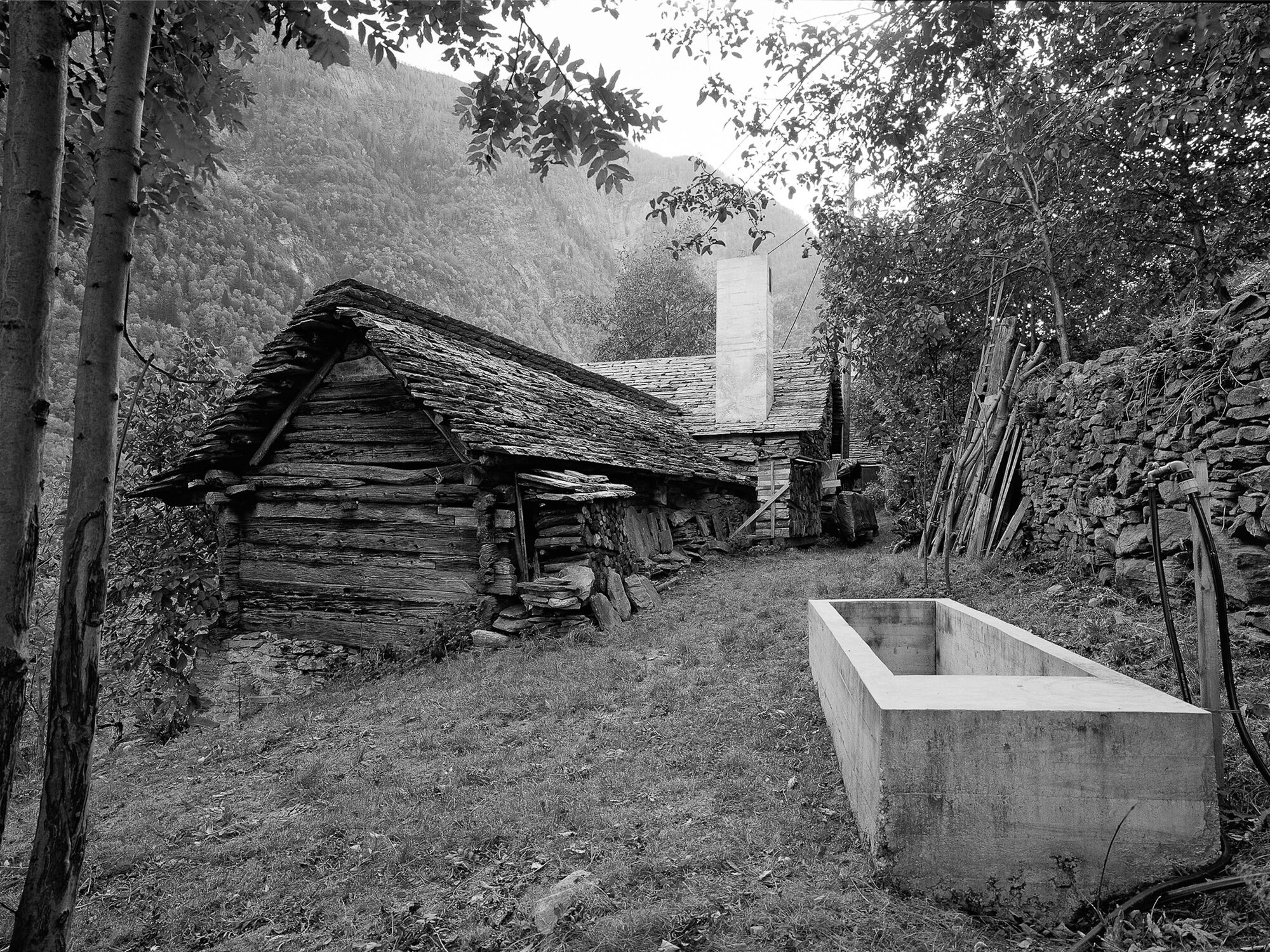 Casa D’Estate
Casa D’Estate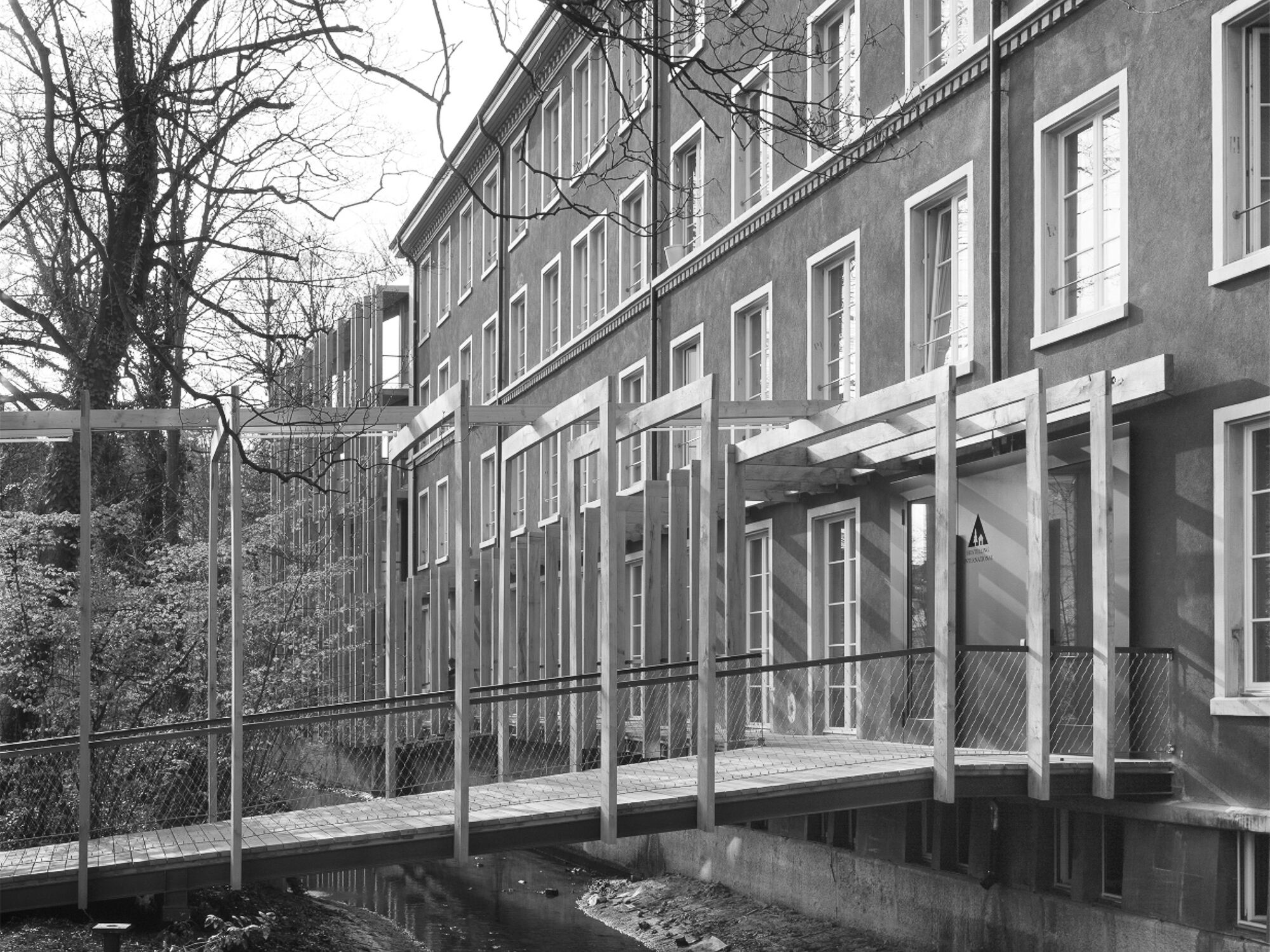 Youth Hostel St. Alban
Youth Hostel St. Alban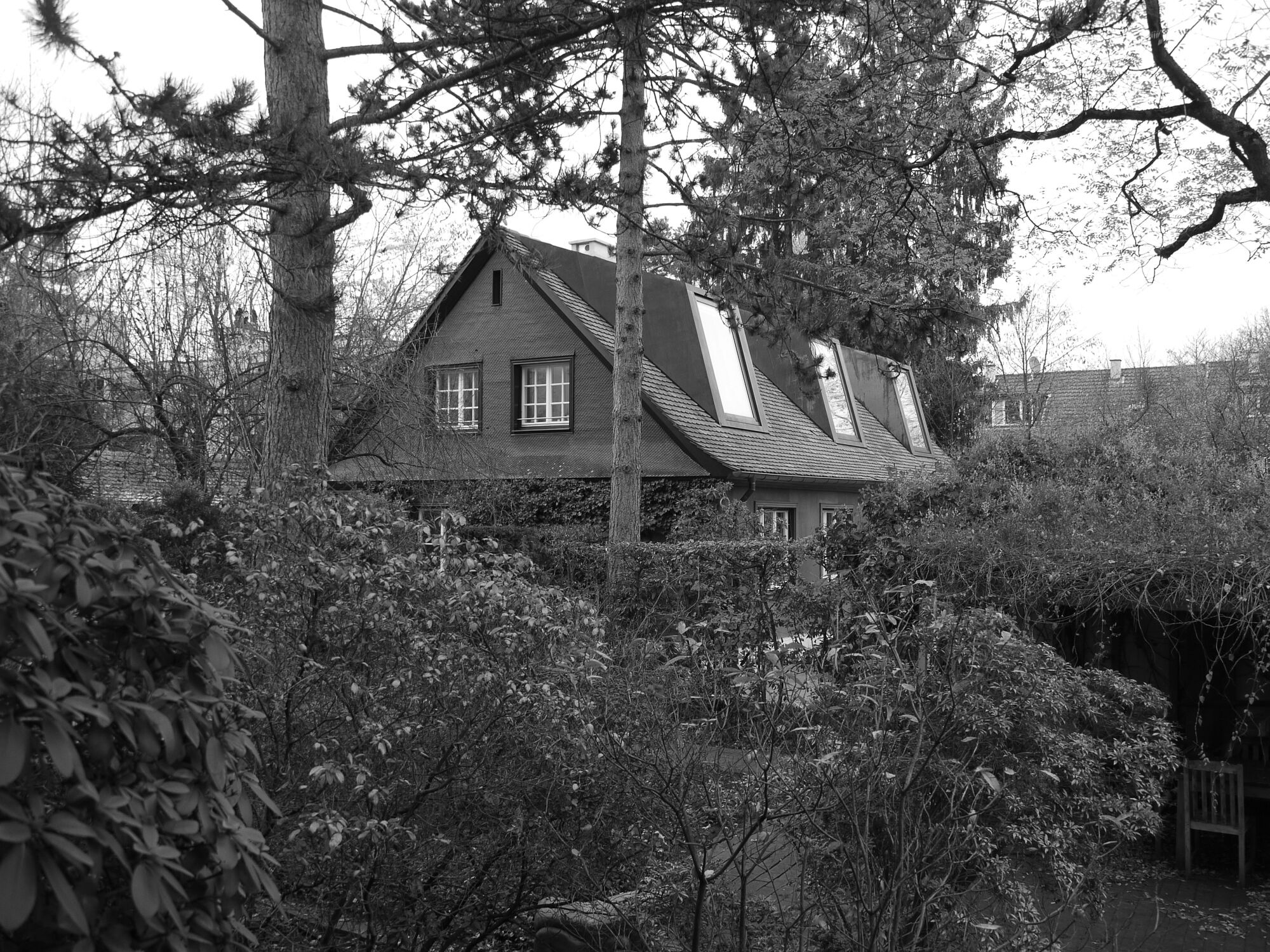 Bernoulli House
Bernoulli House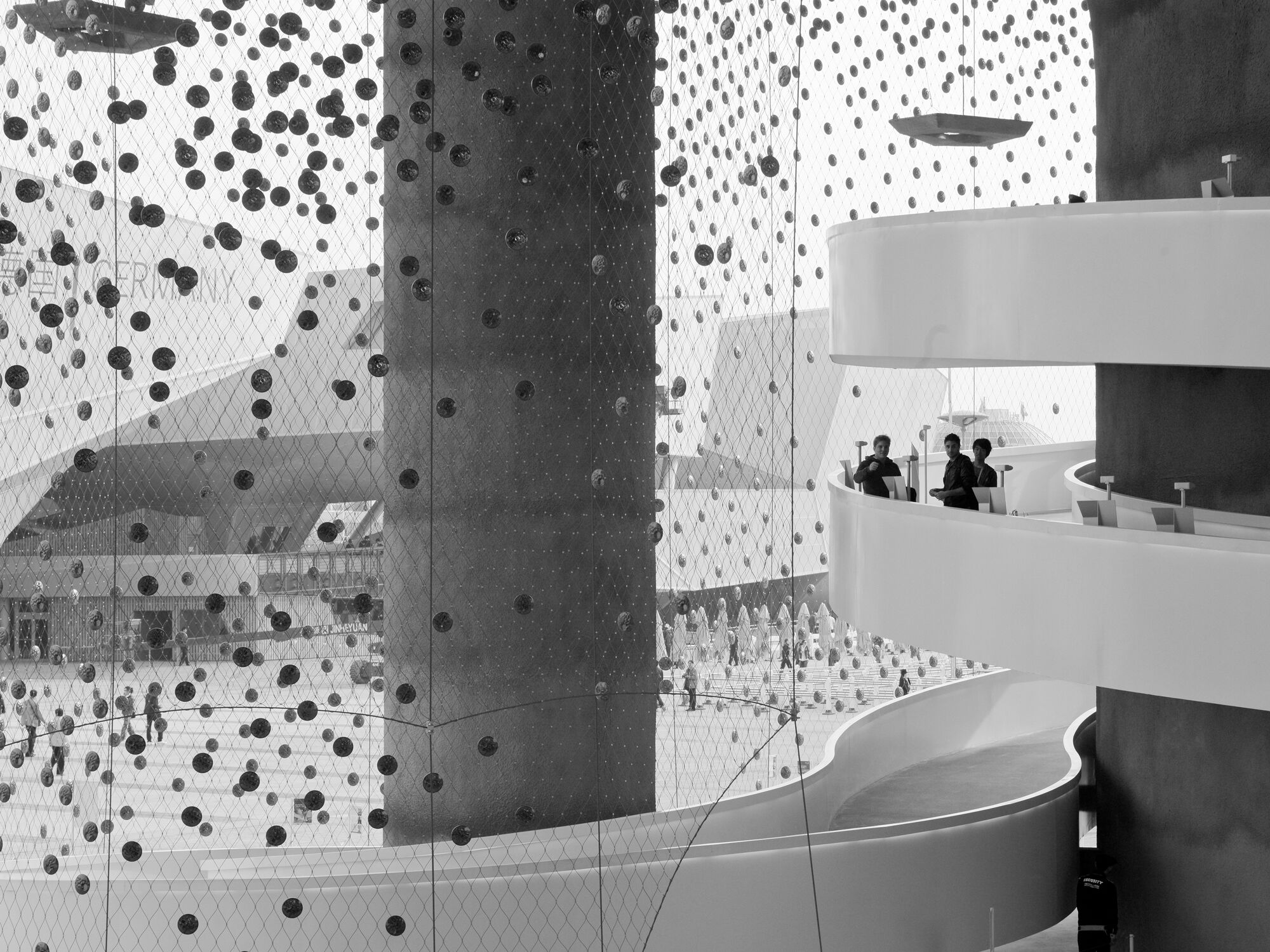 Swiss Expo Pavilion
Swiss Expo Pavilion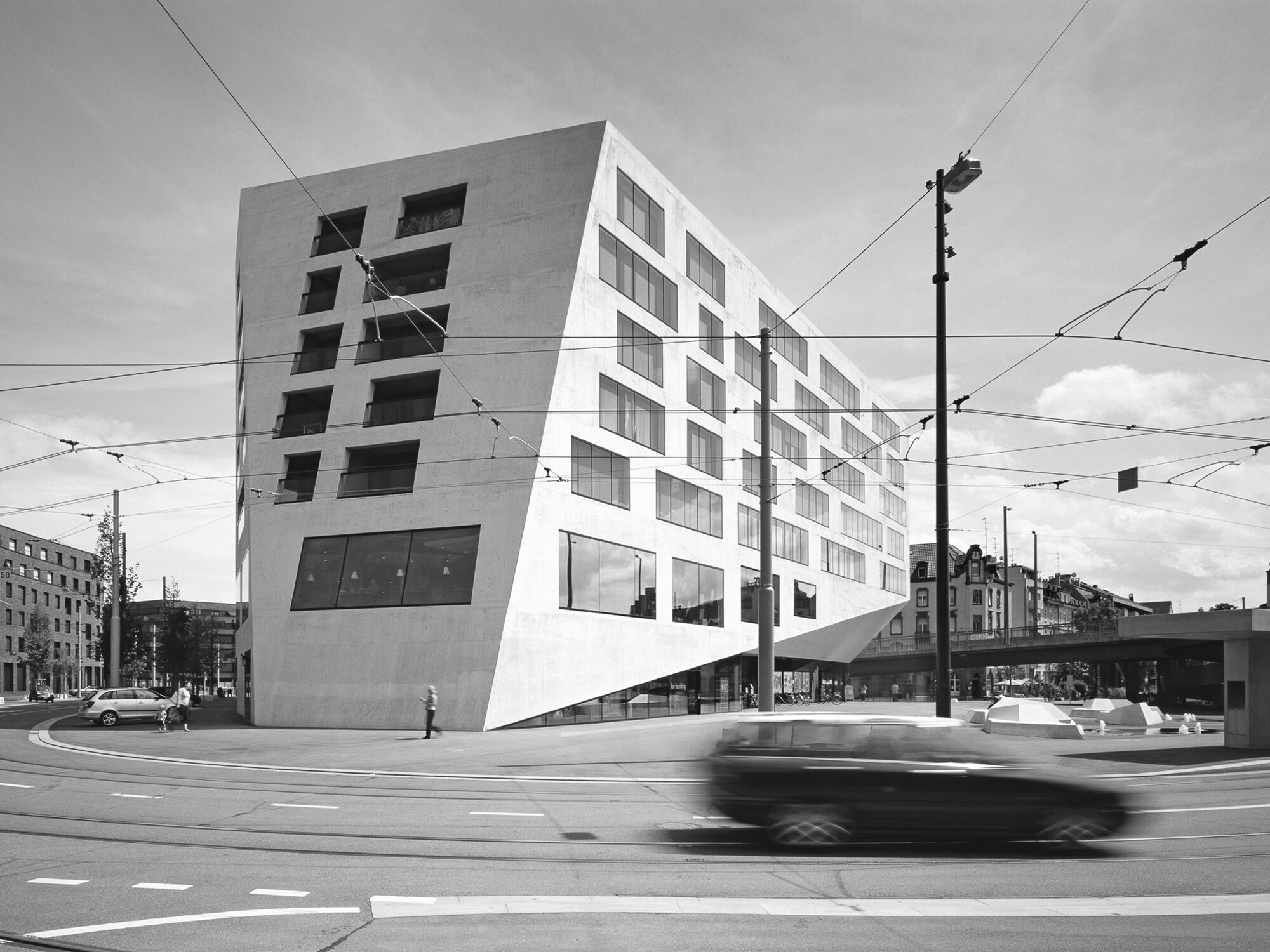 Volta Zentrum
Volta Zentrum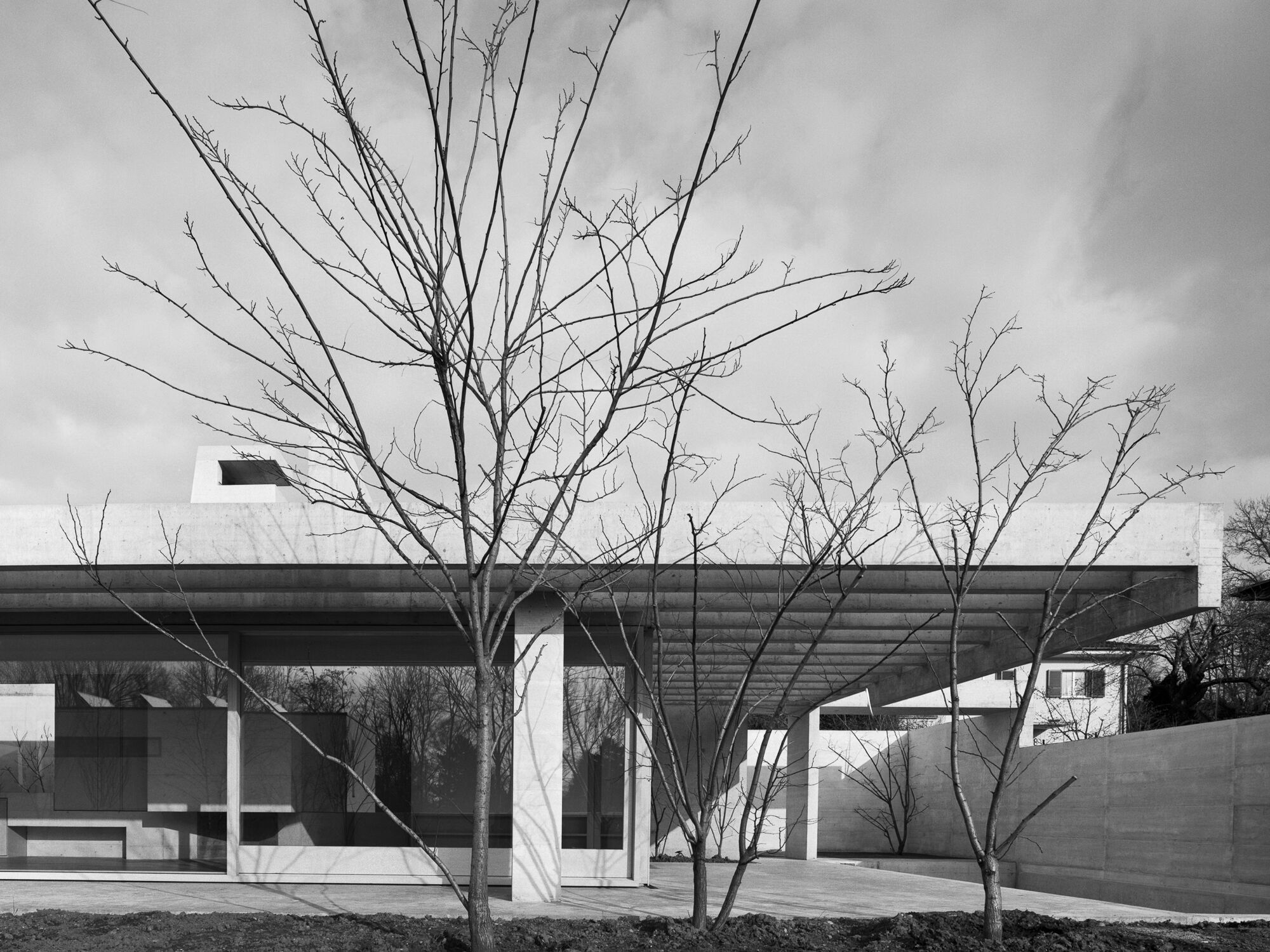 Binningen House
Binningen House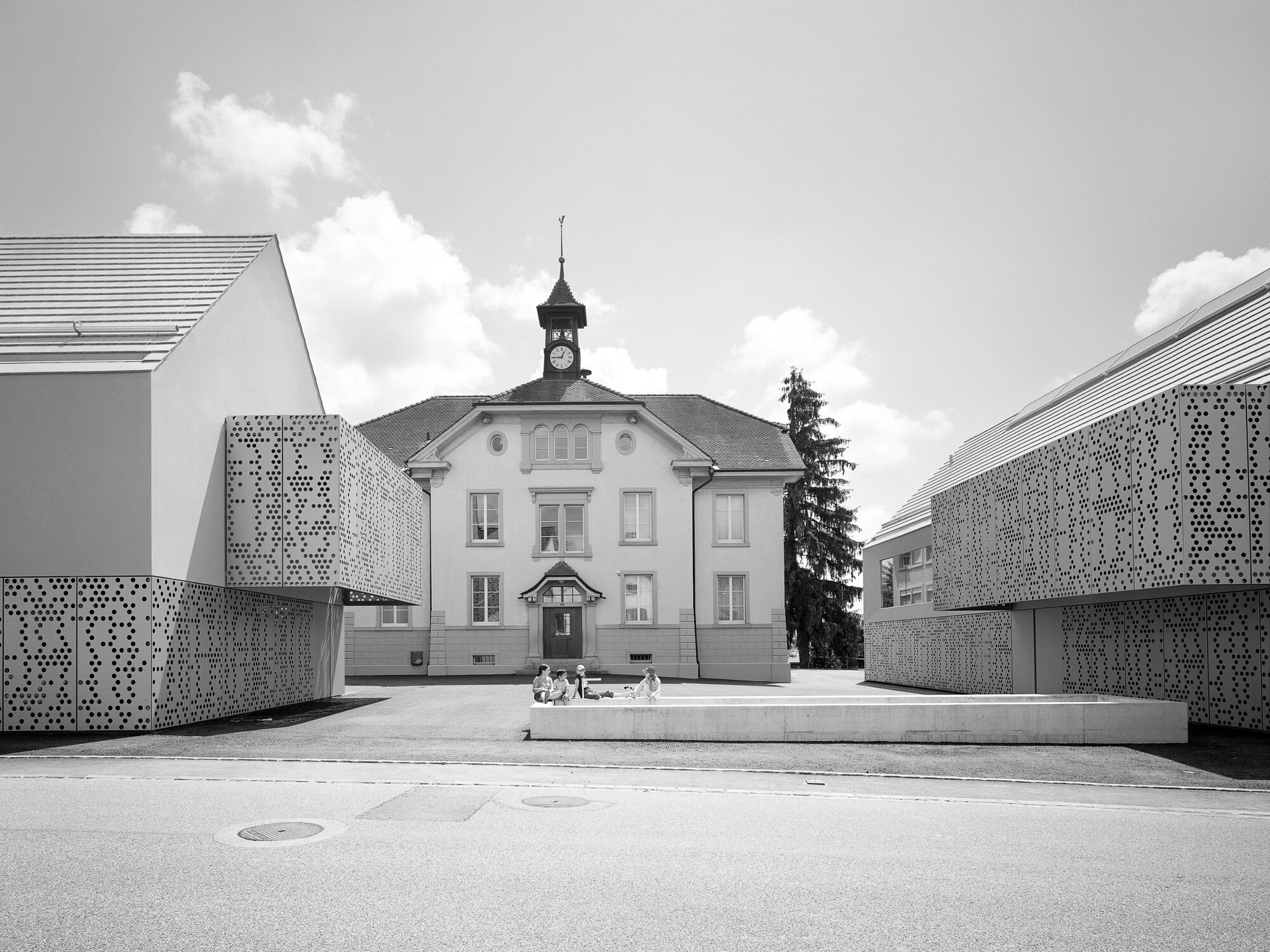 Community Centre Seltisberg
Community Centre Seltisberg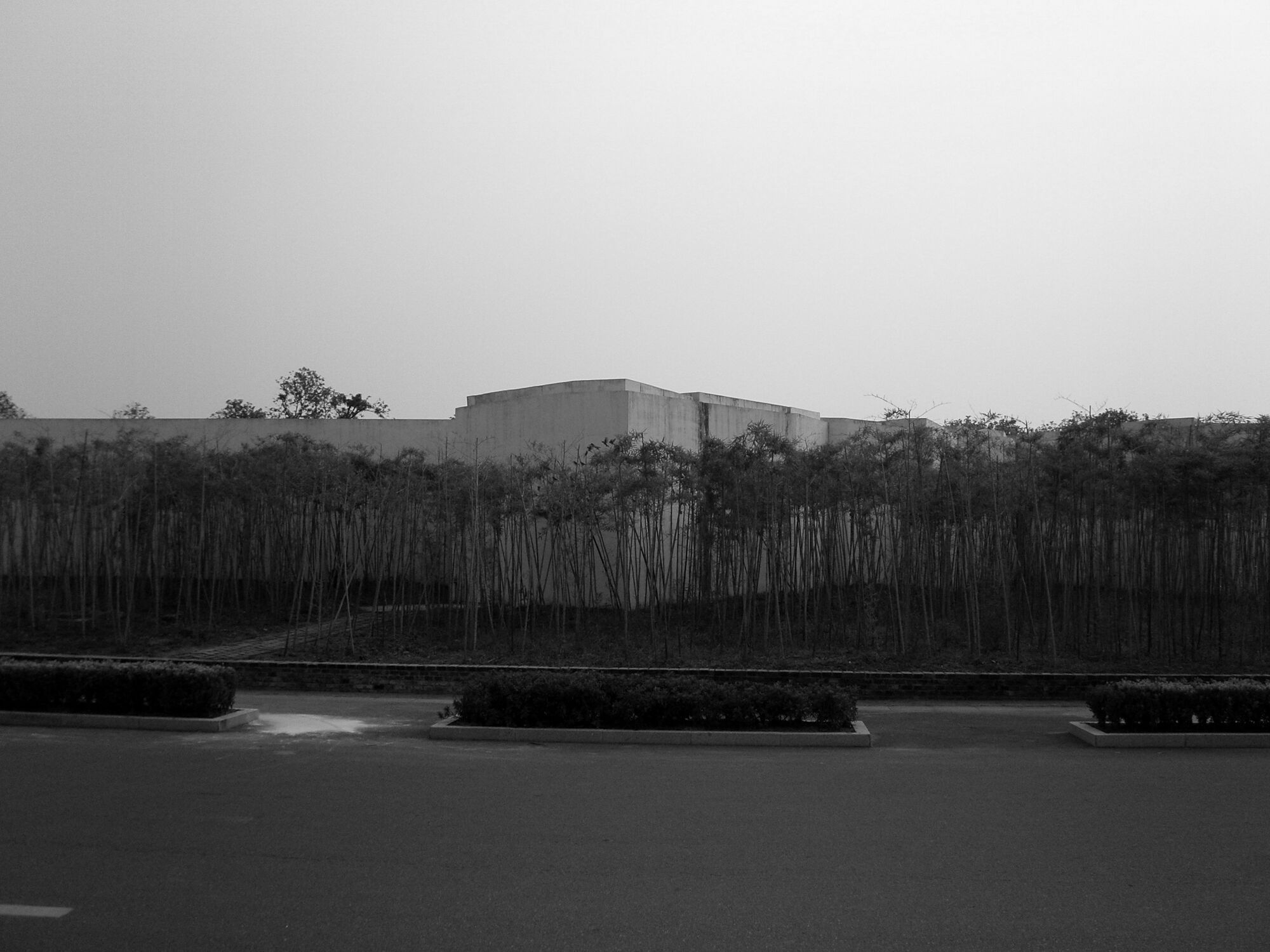 Manager Pavilion Jinhua
Manager Pavilion Jinhua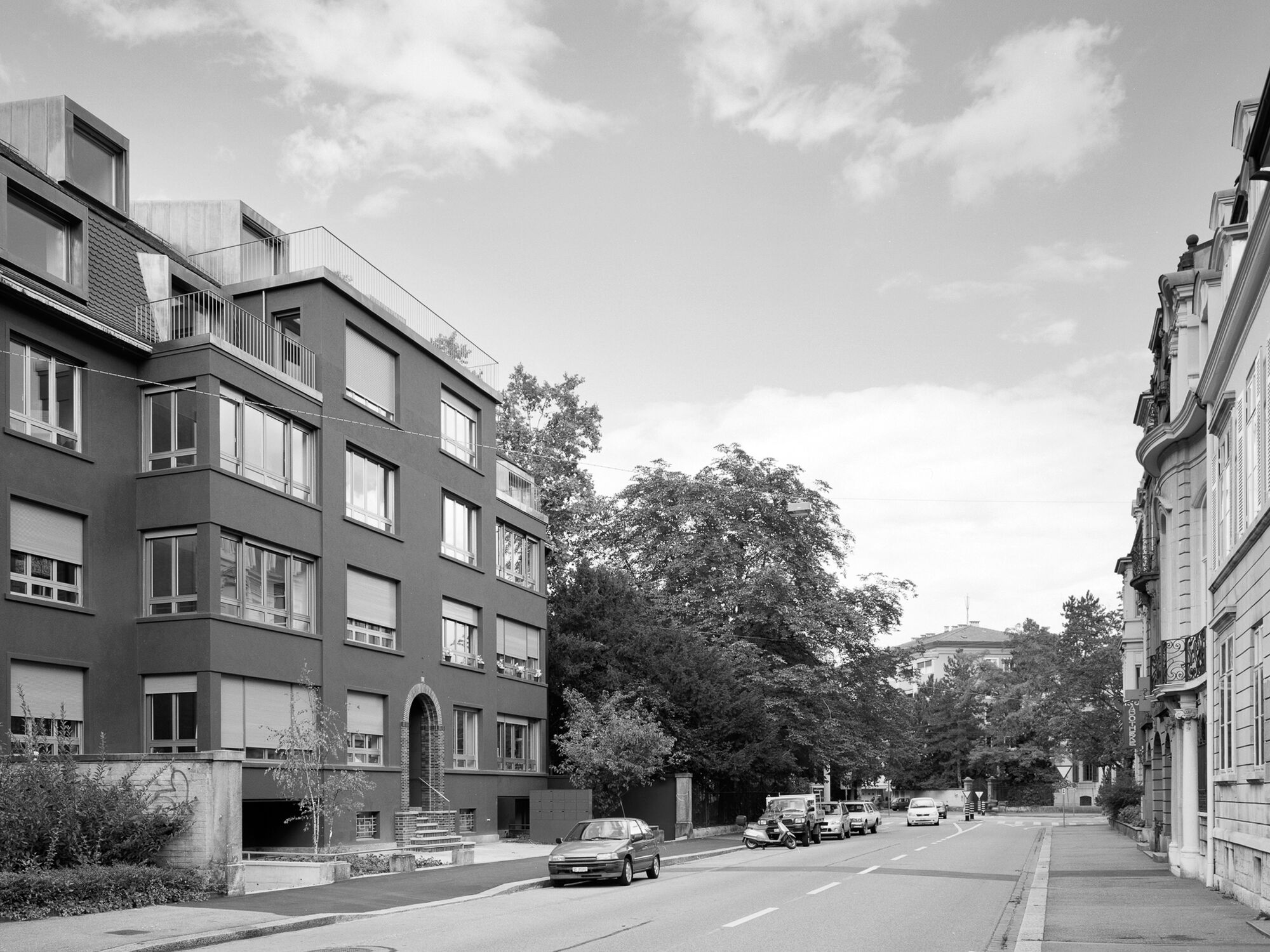 Residential Housing Sevogelstrasse
Residential Housing Sevogelstrasse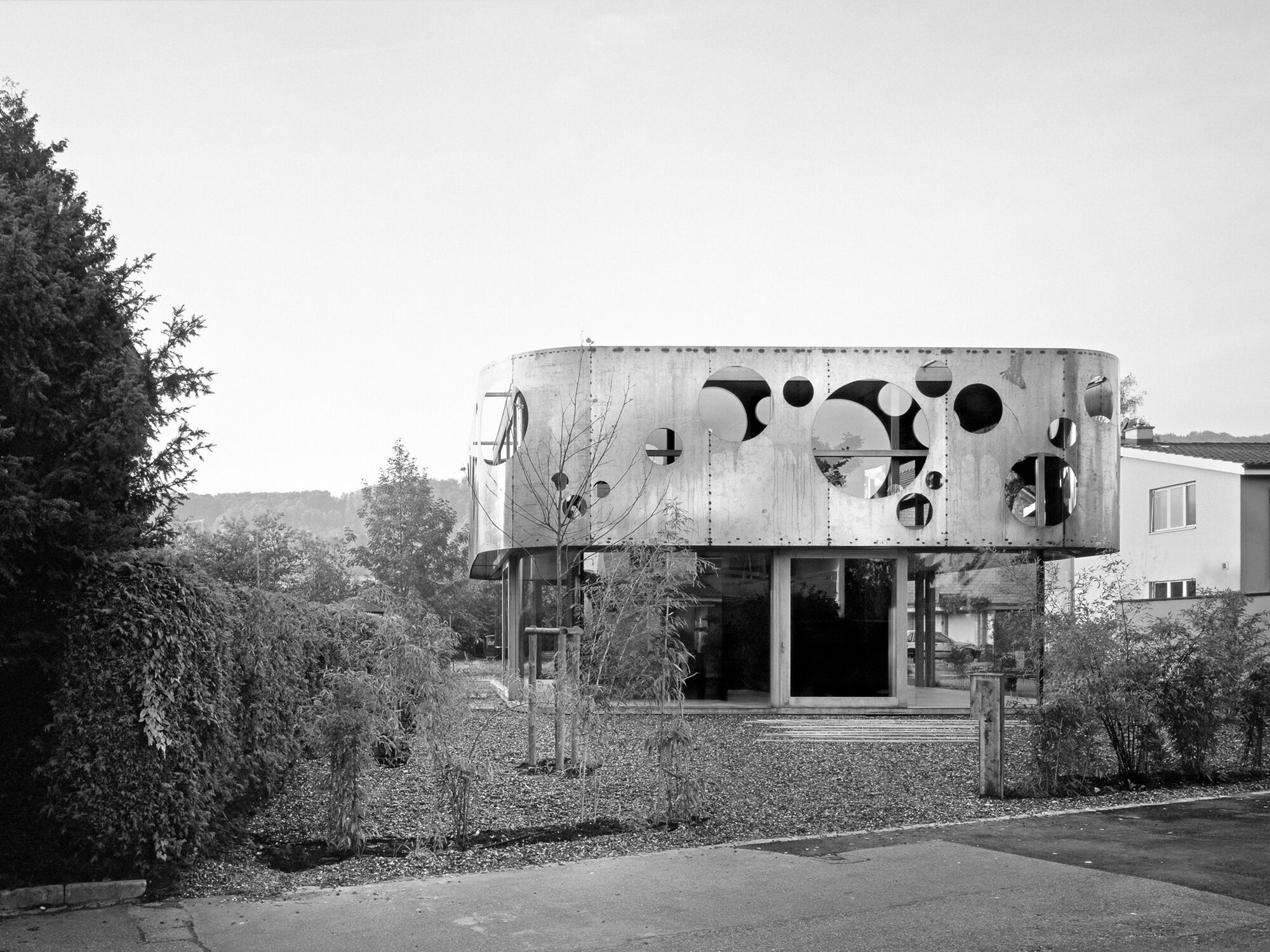 Aesch House
Aesch House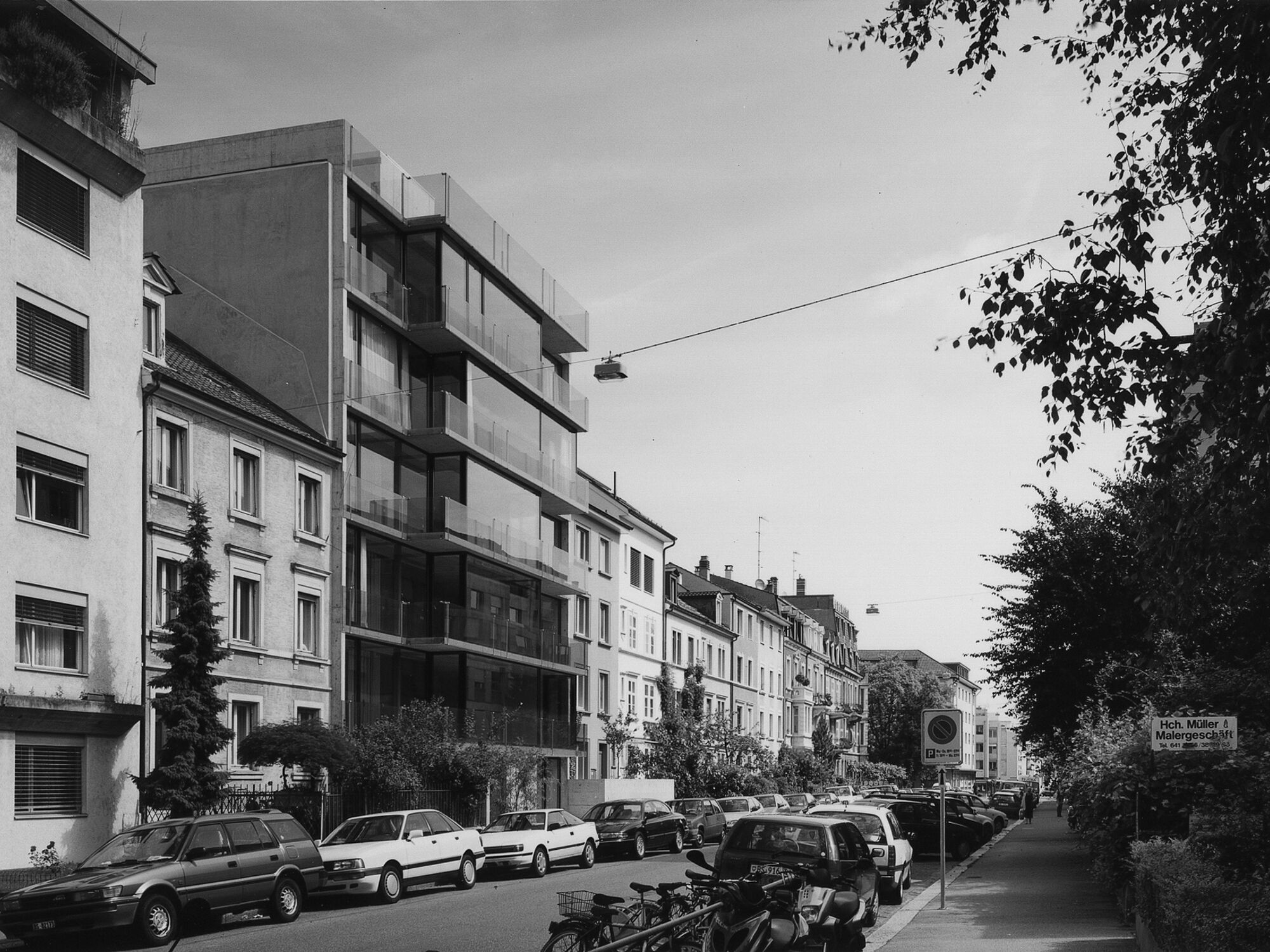 Loft House Basel
Loft House Basel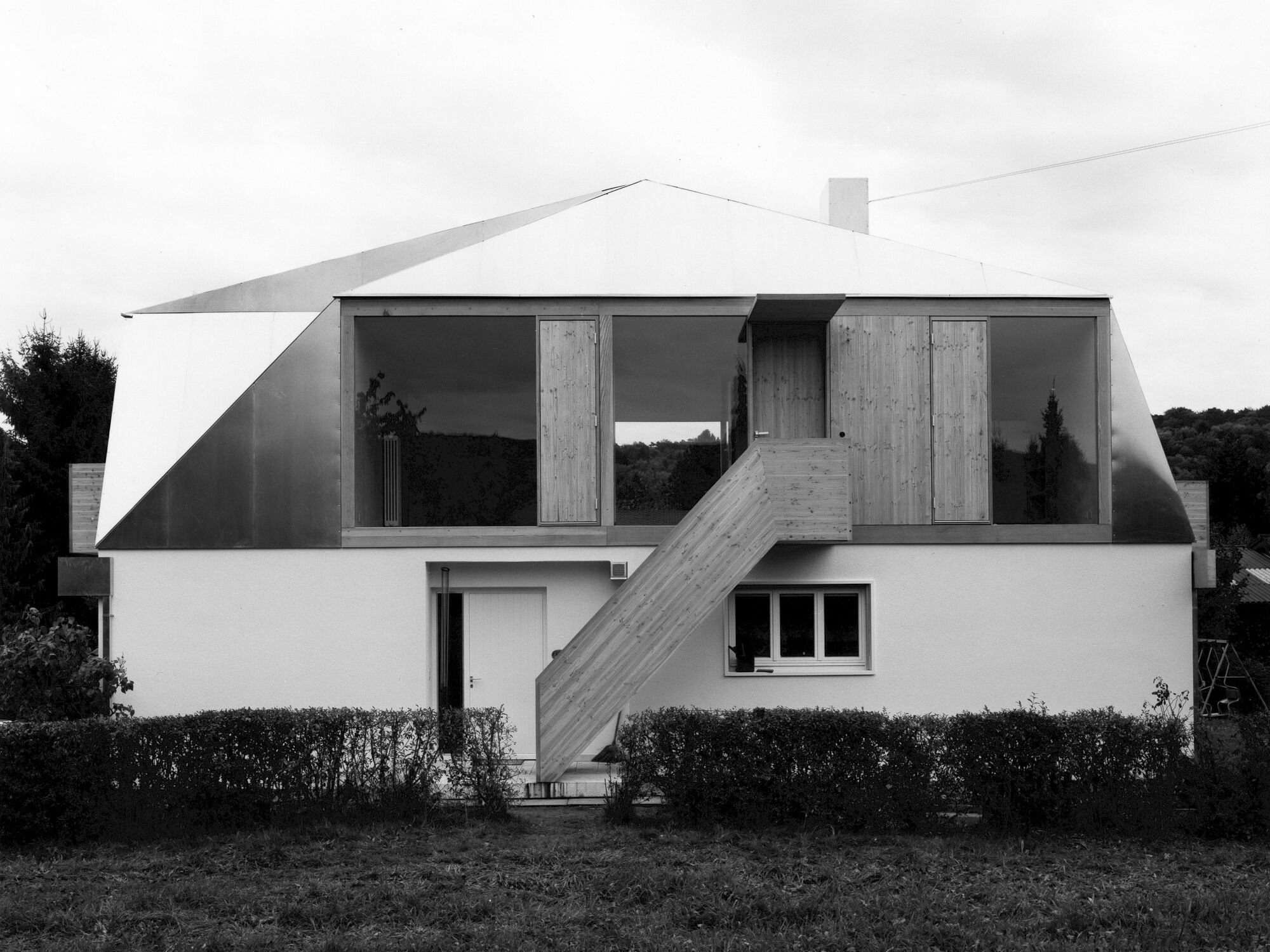 Lupsingen House
Lupsingen House